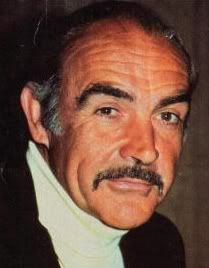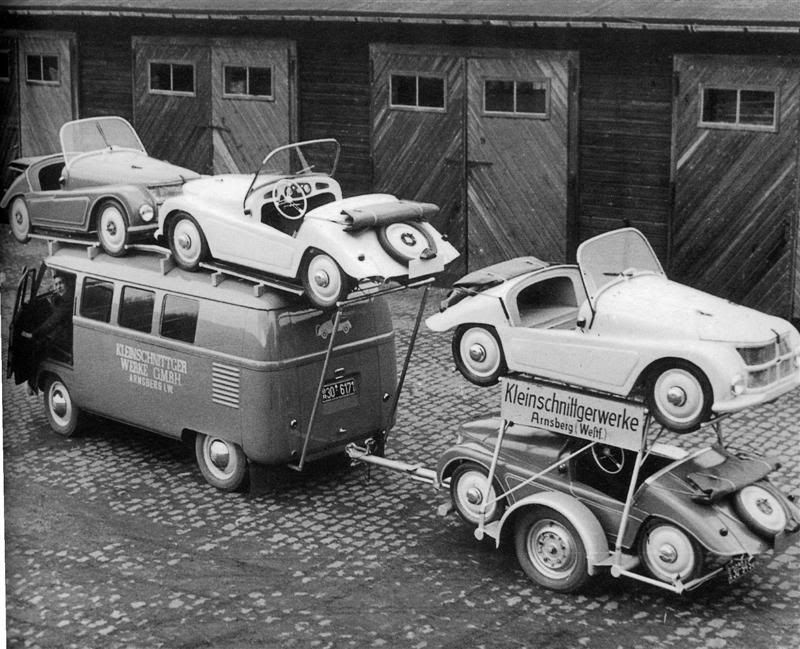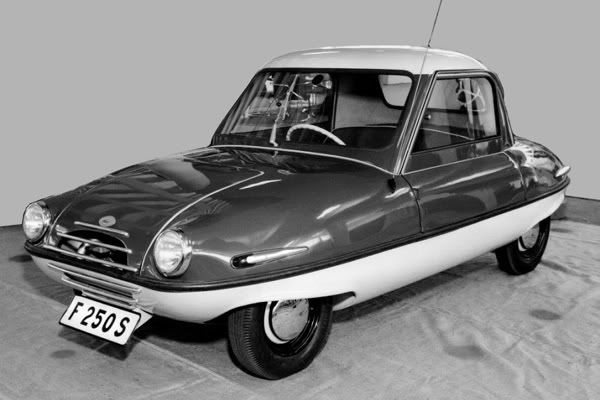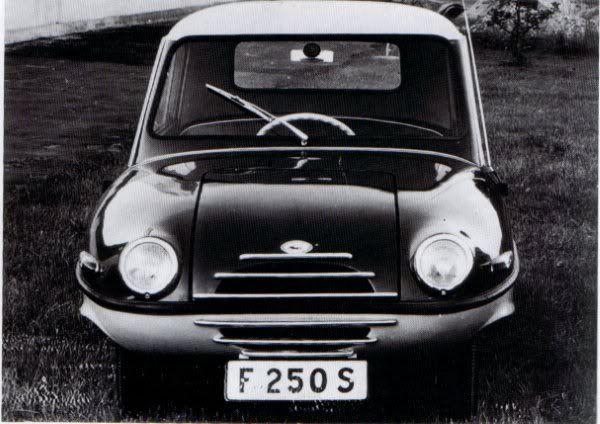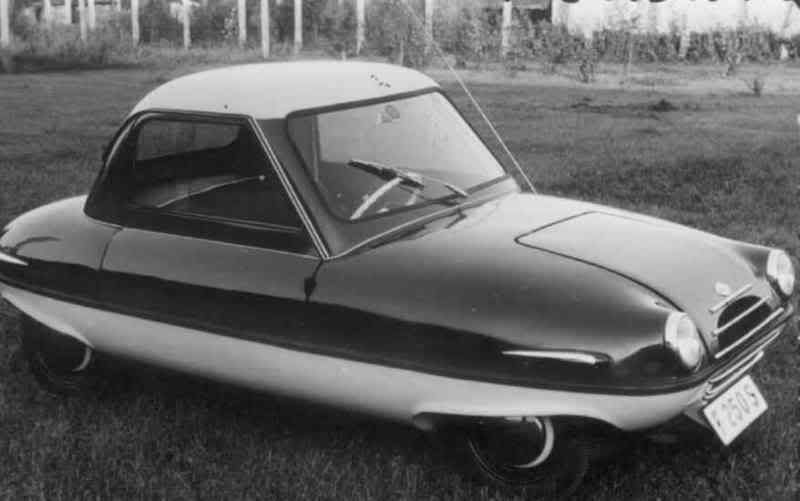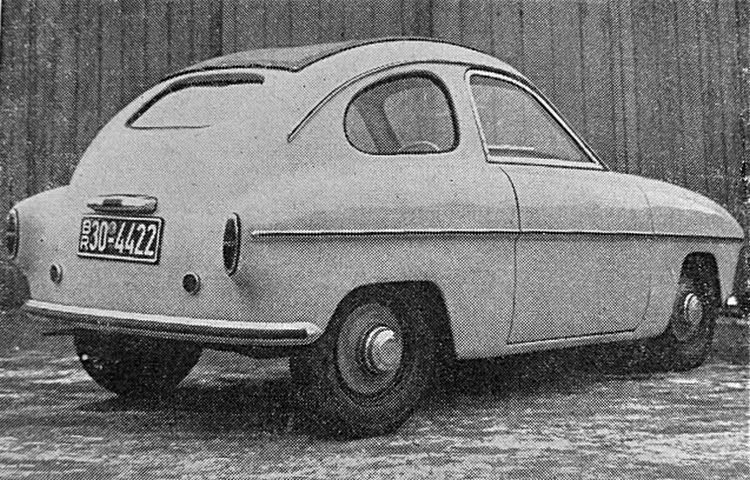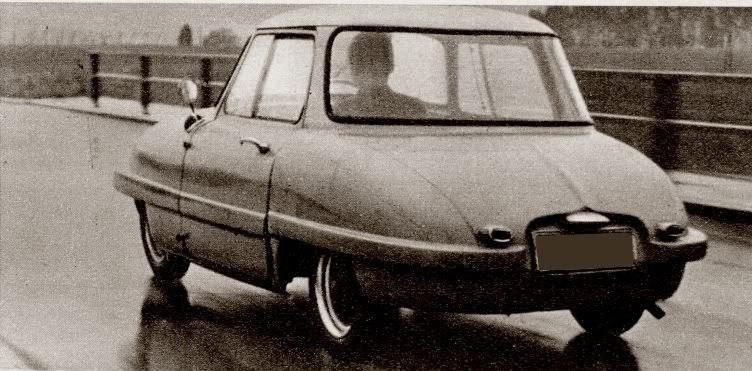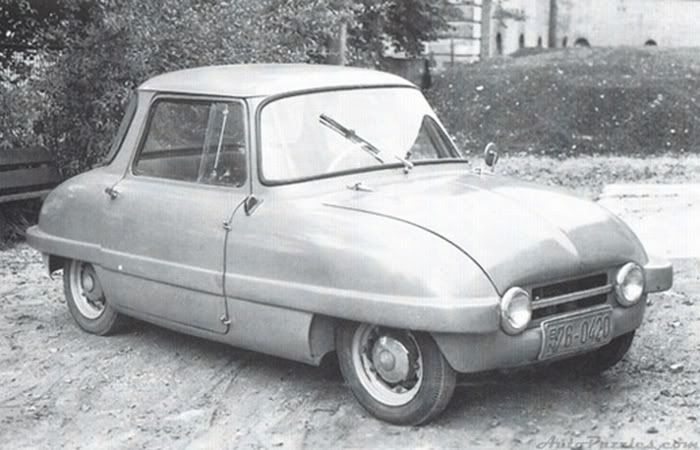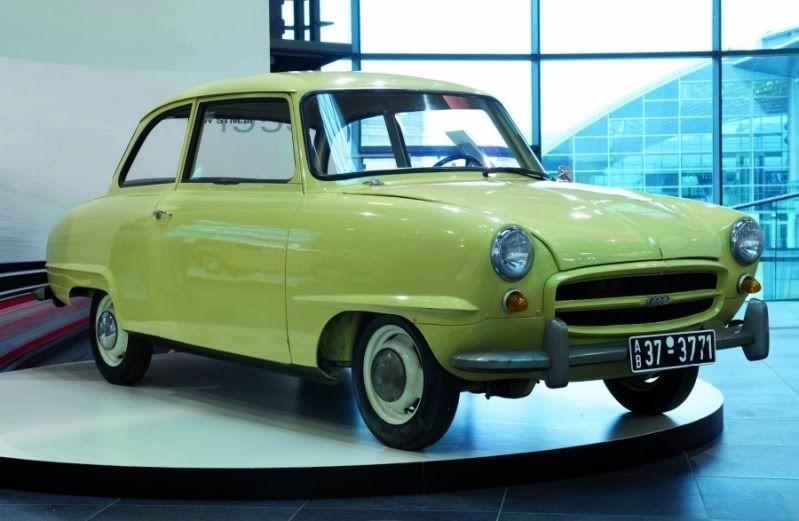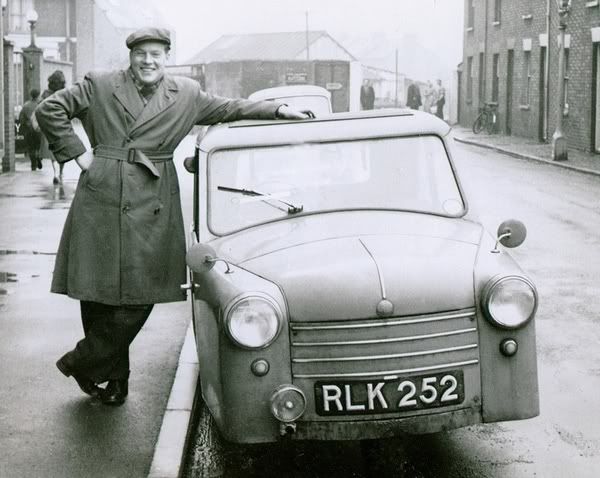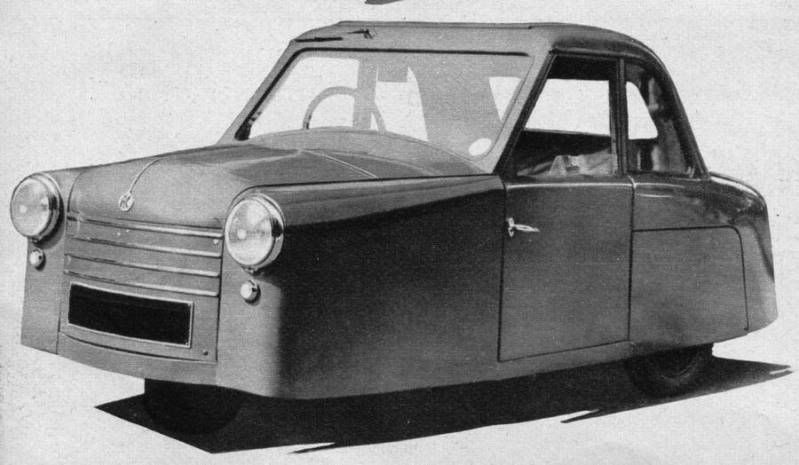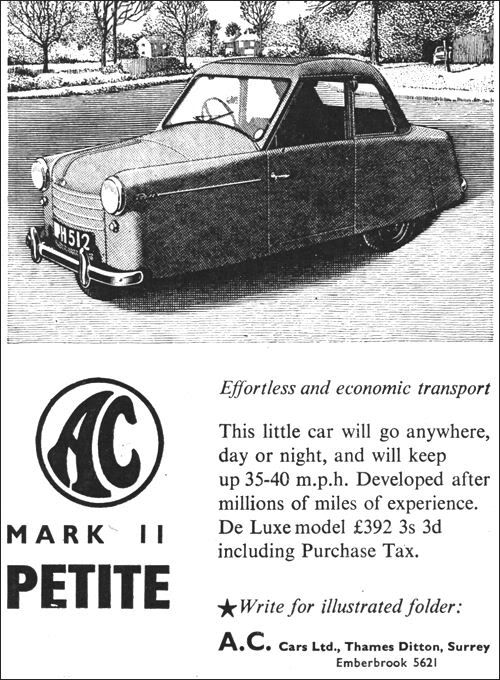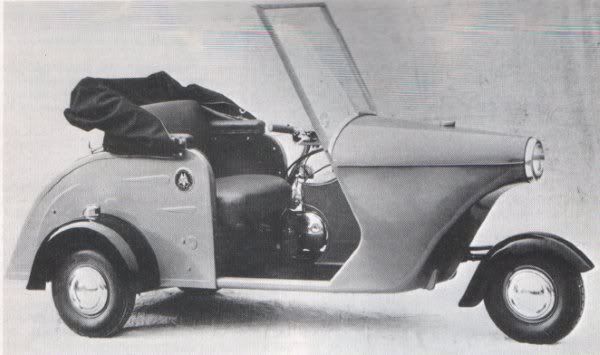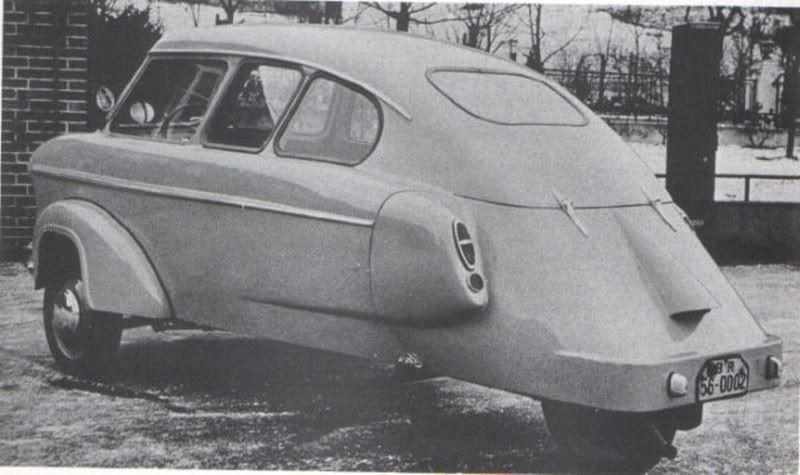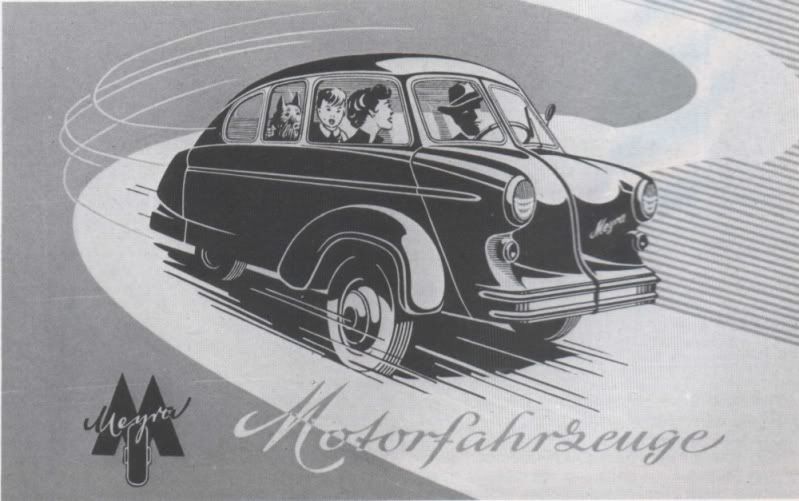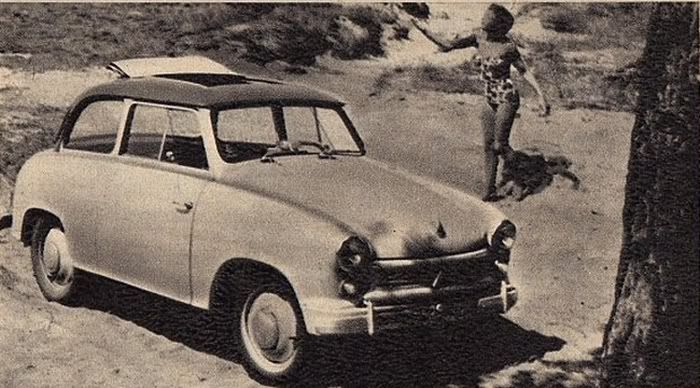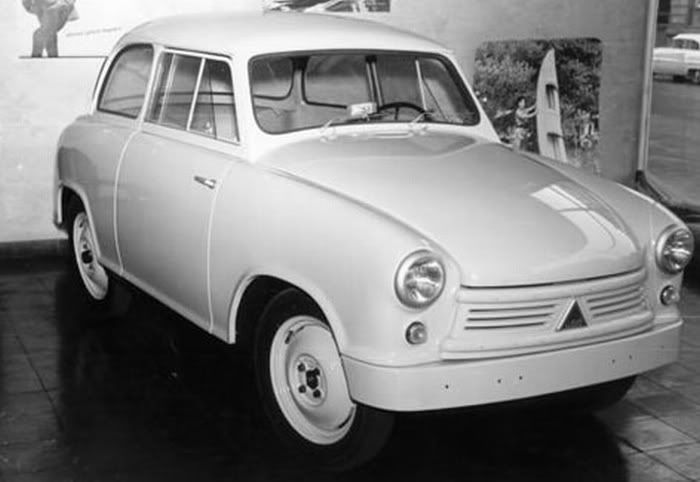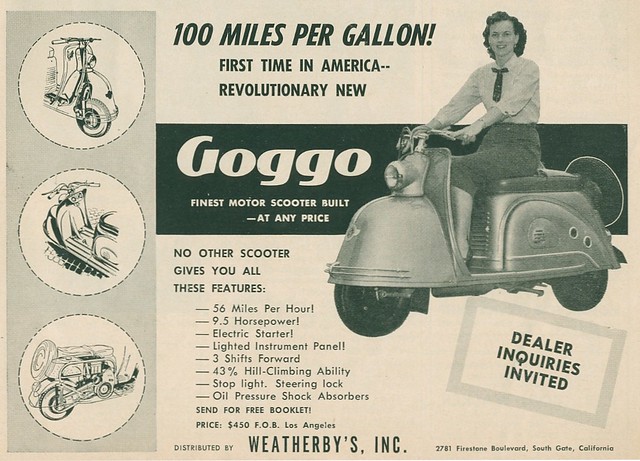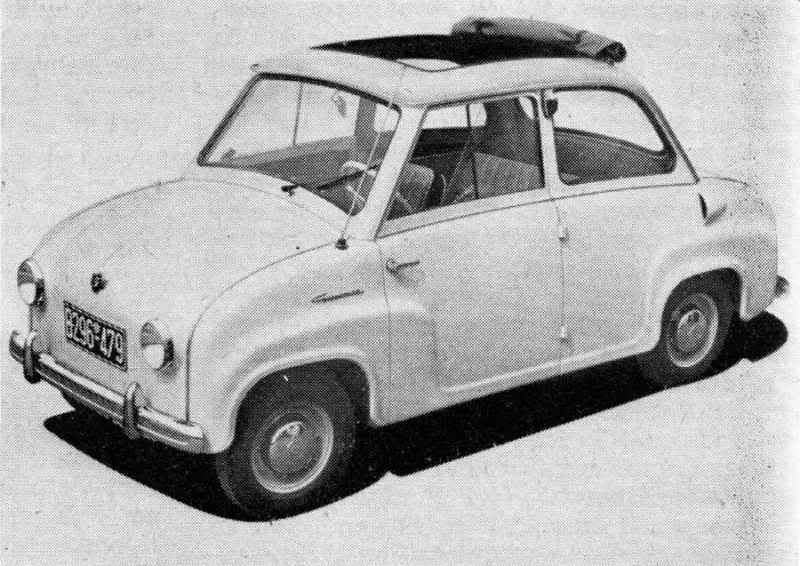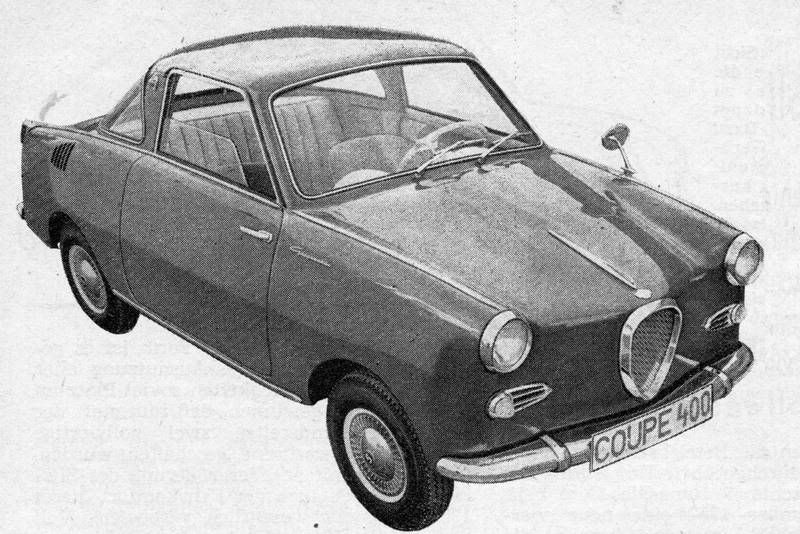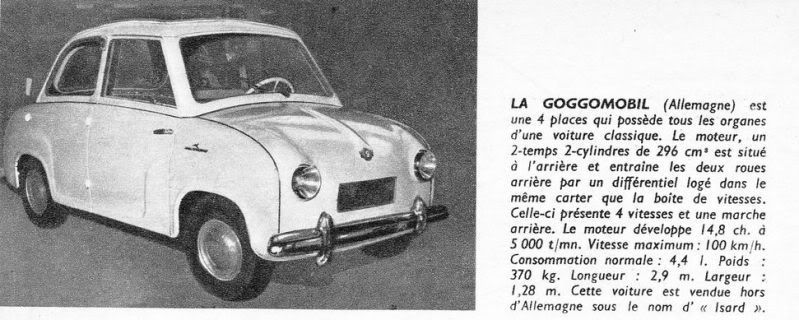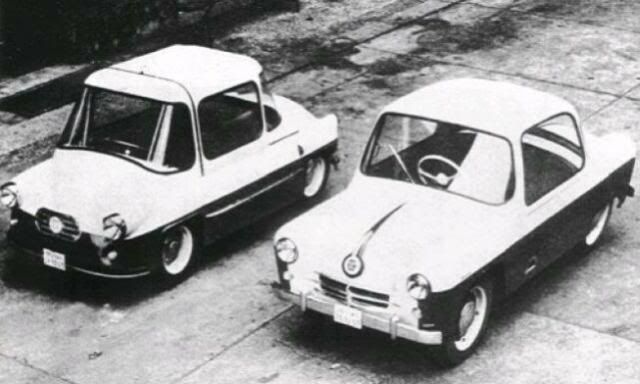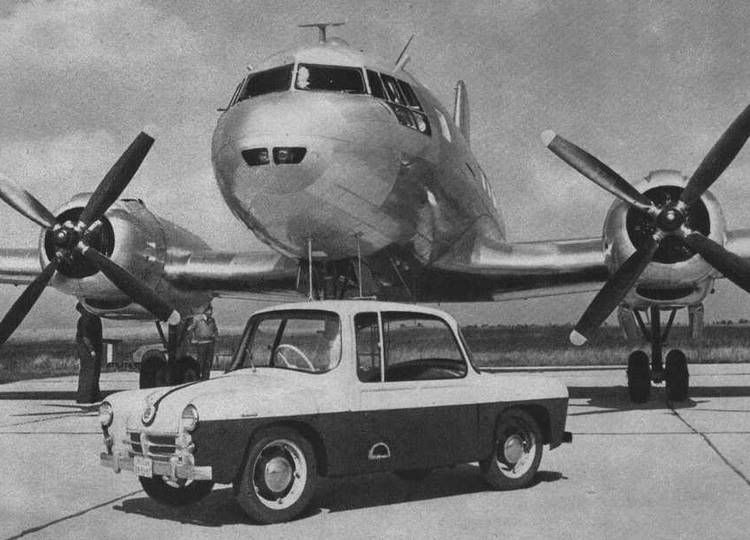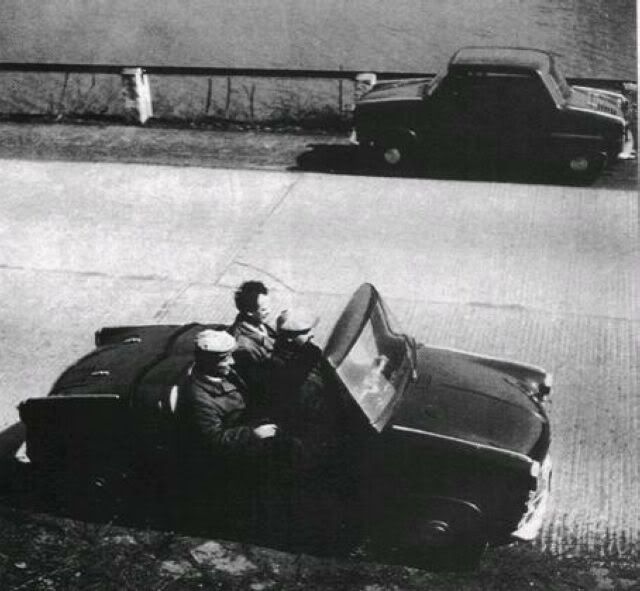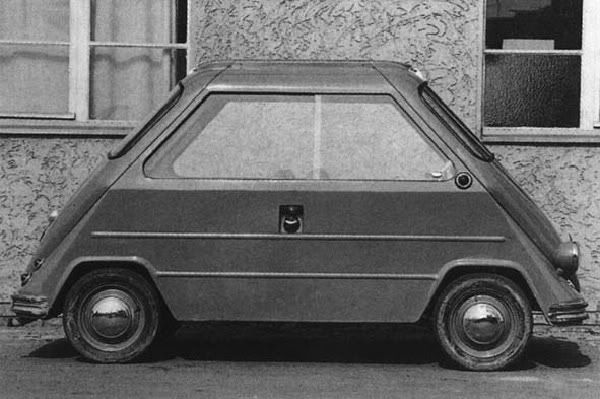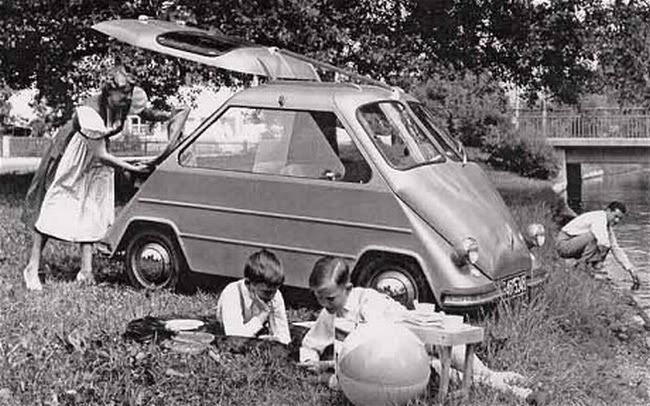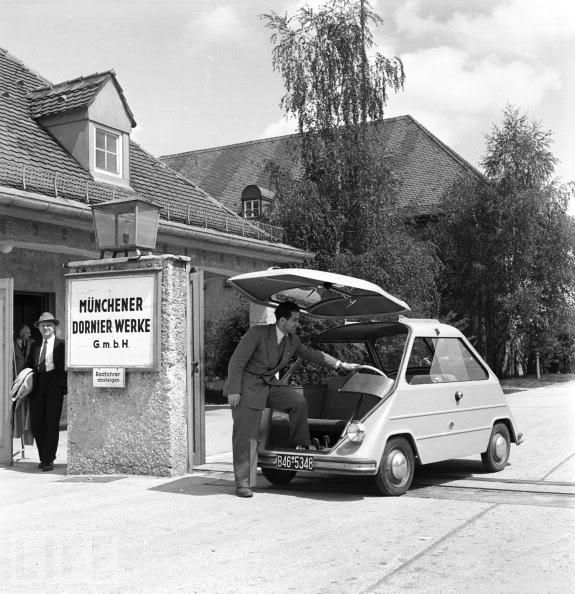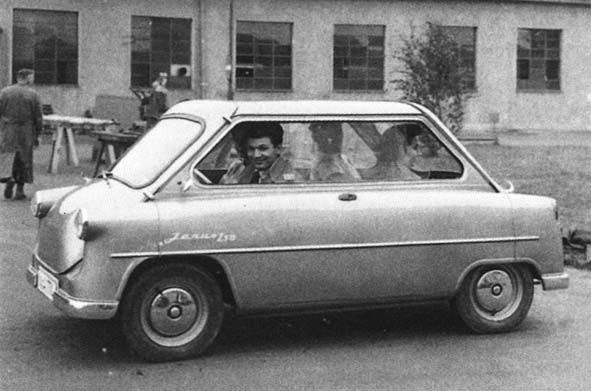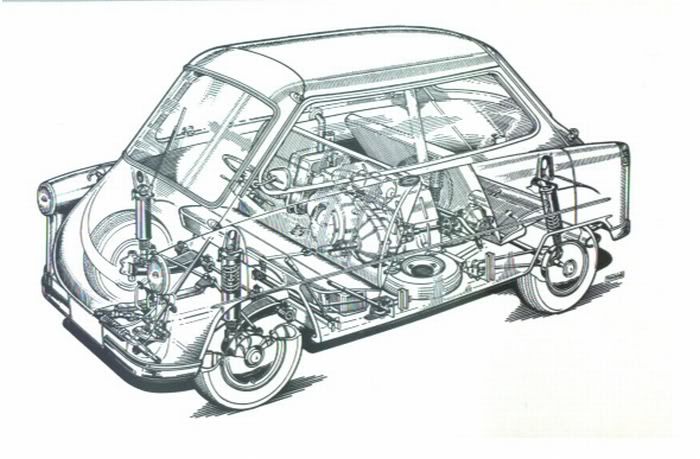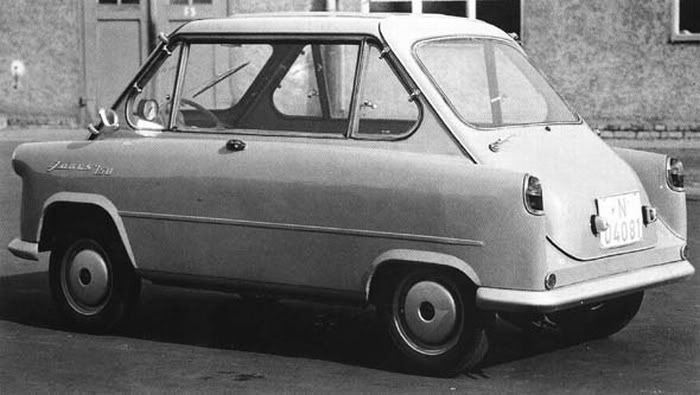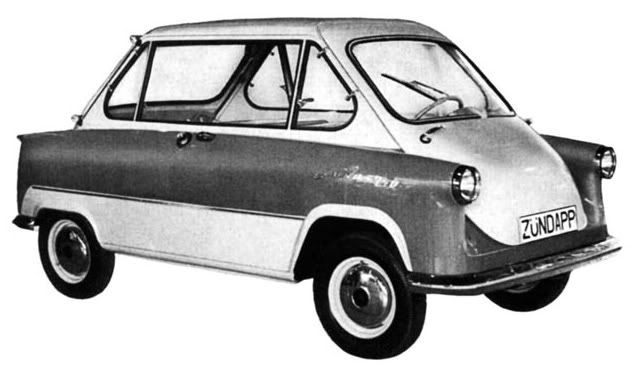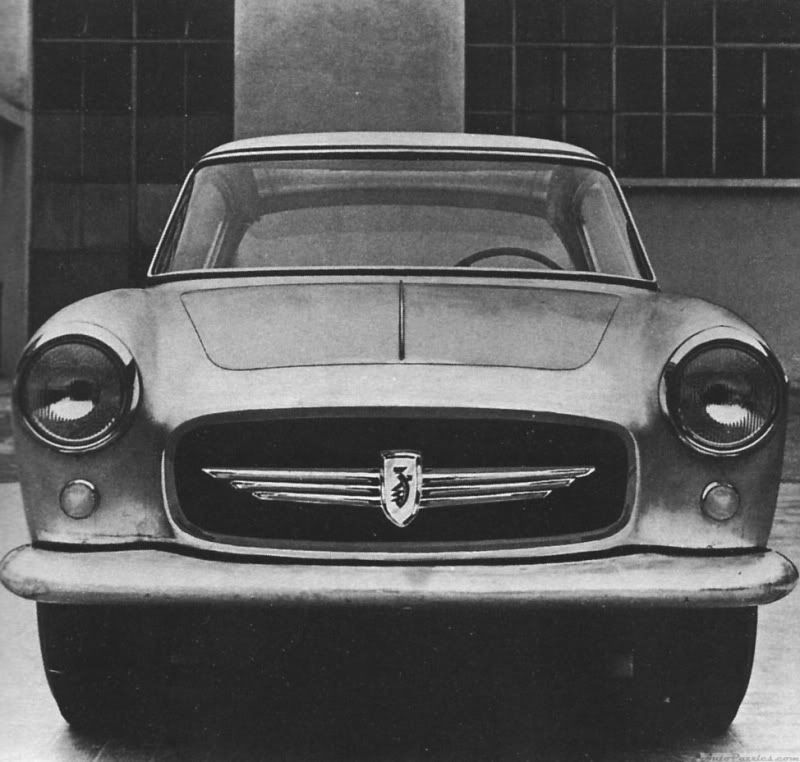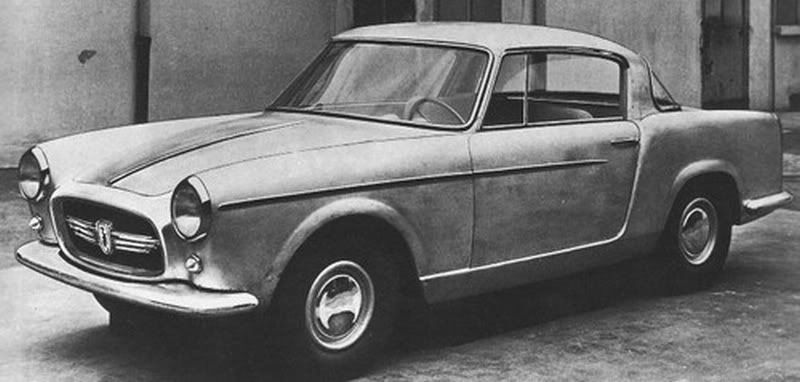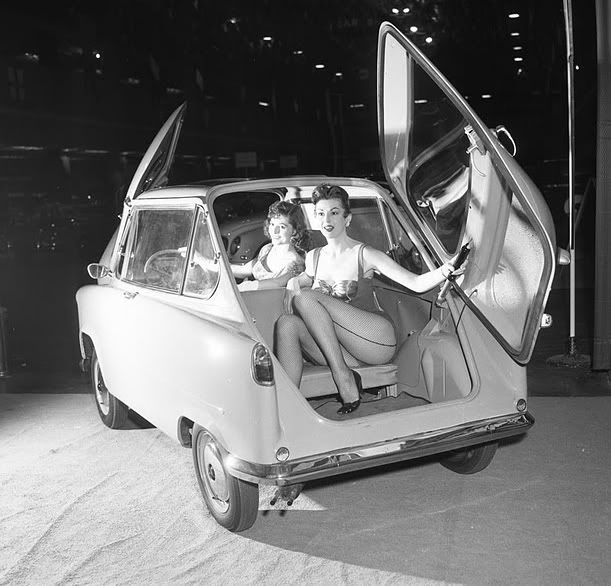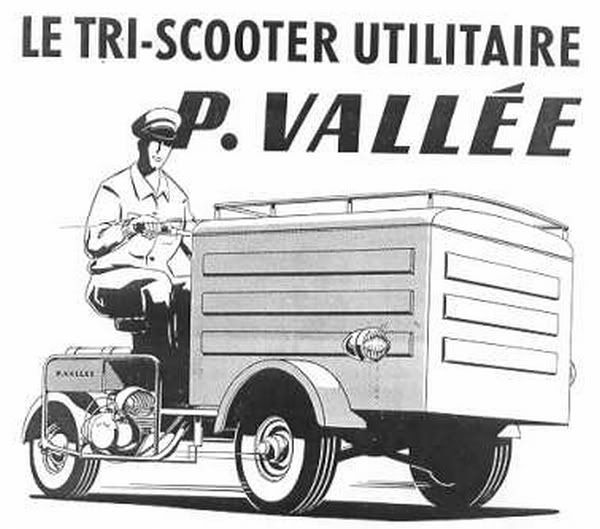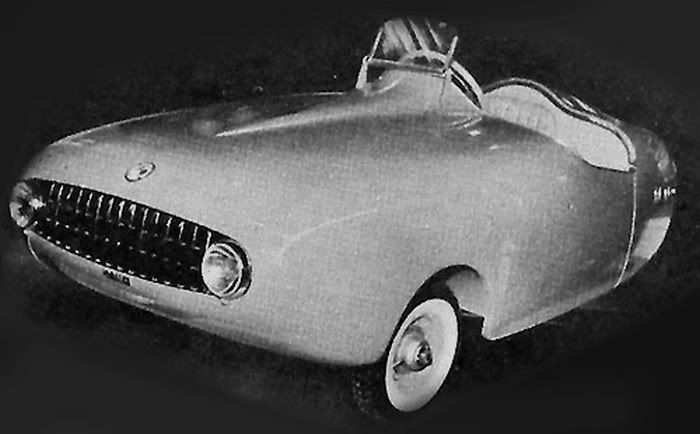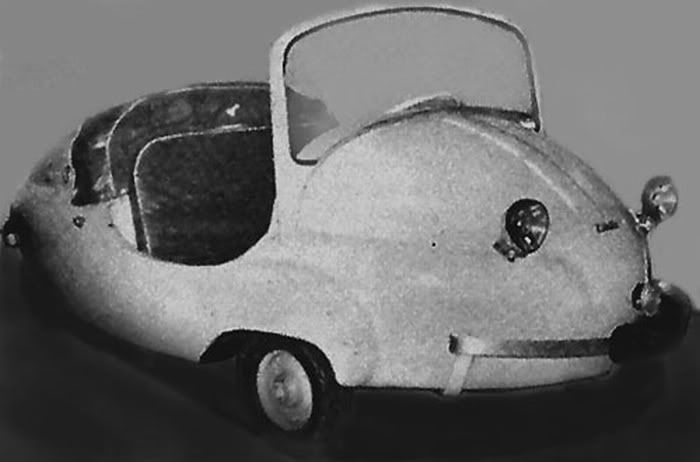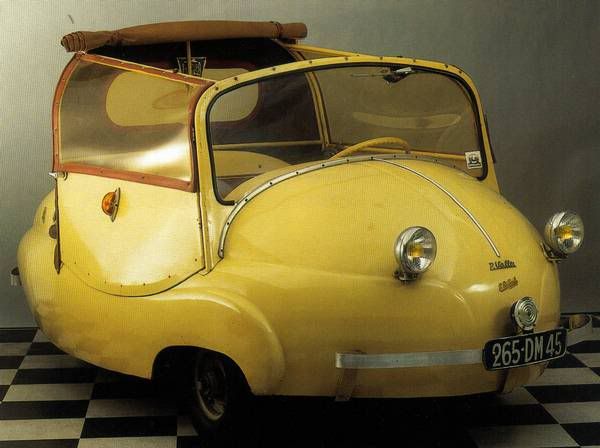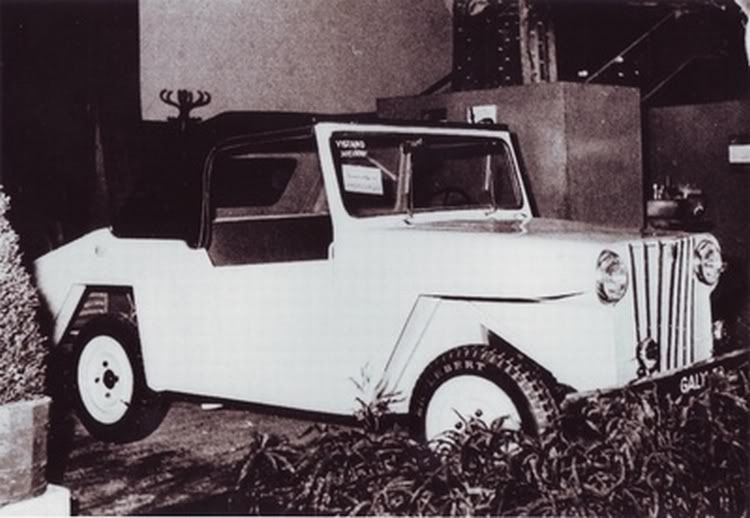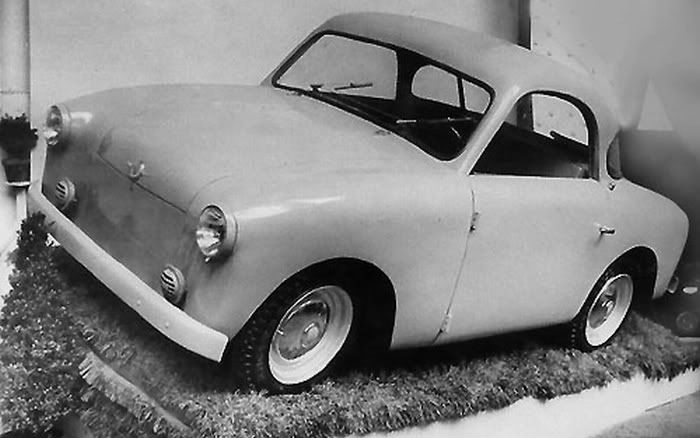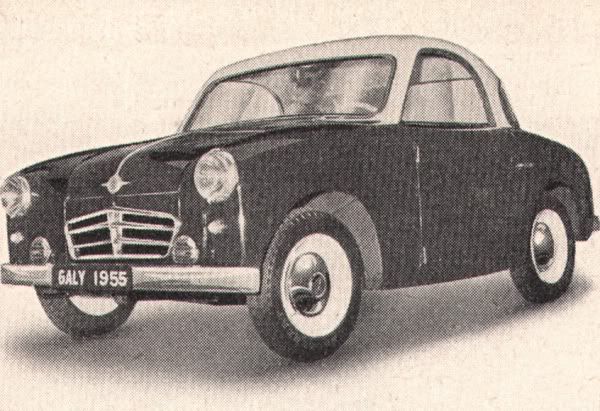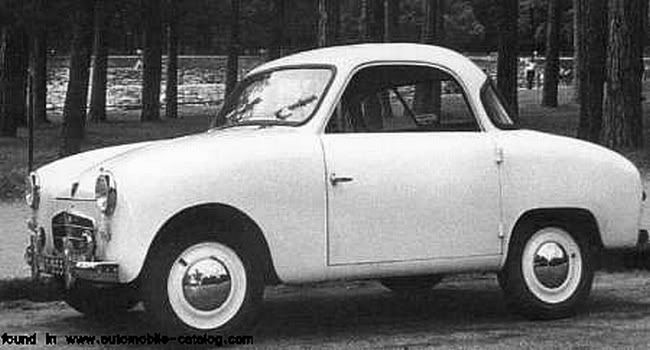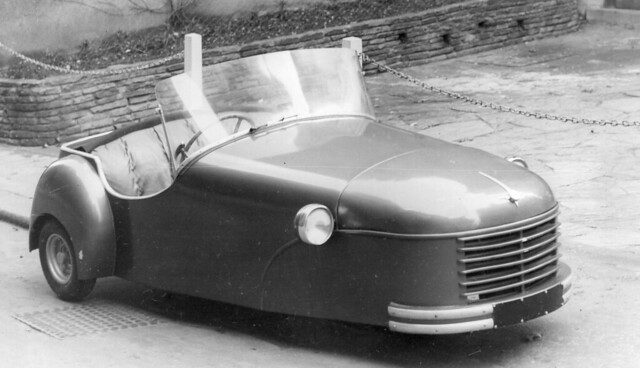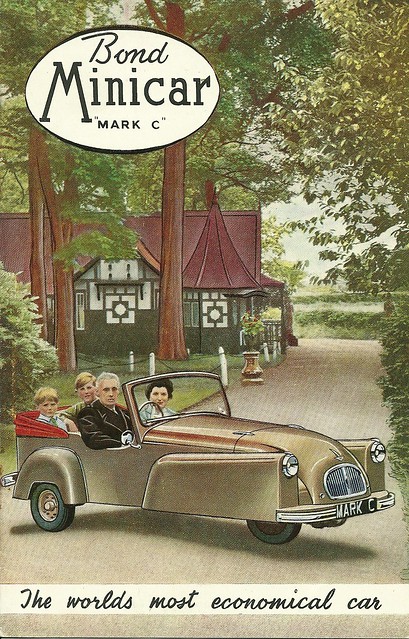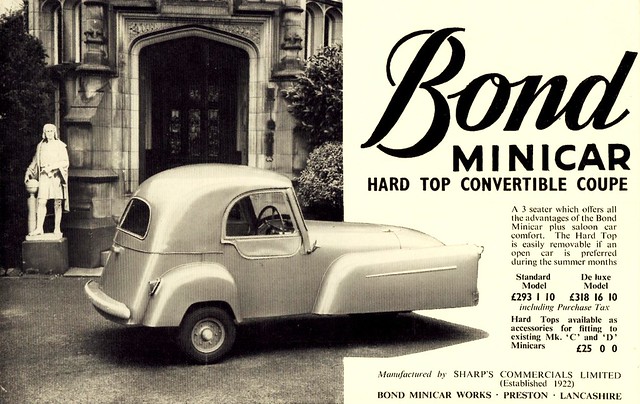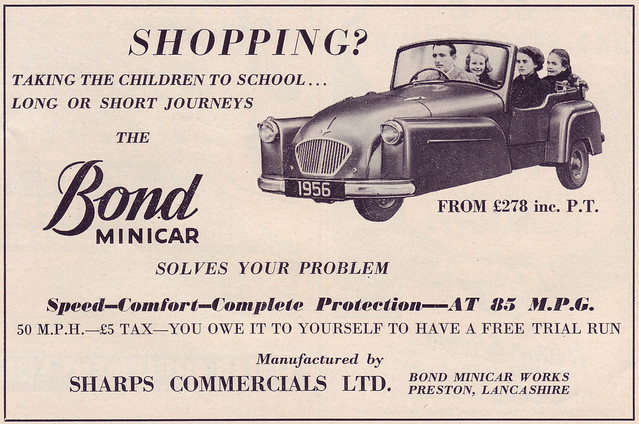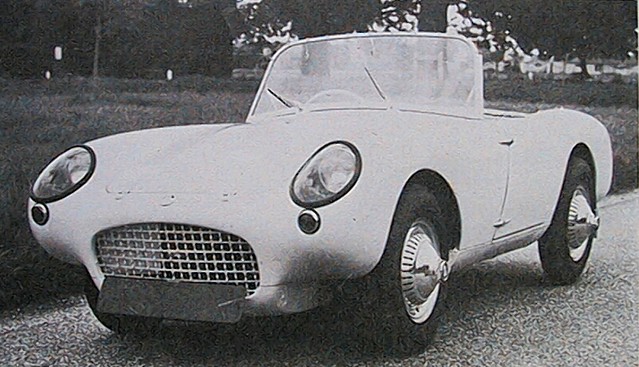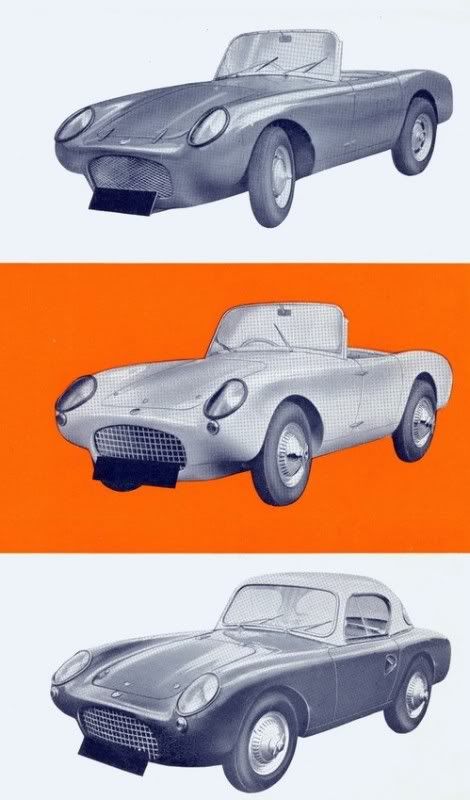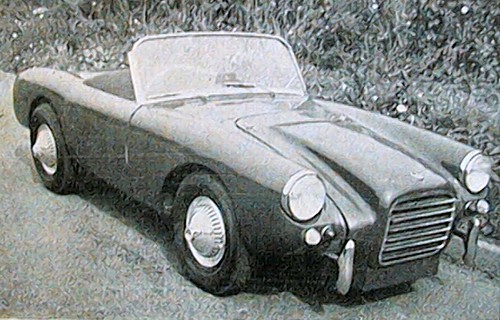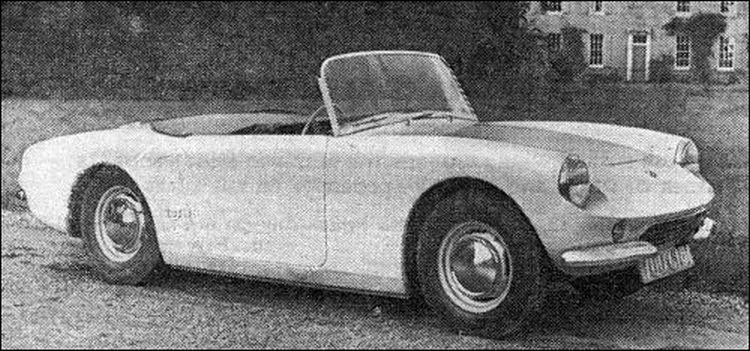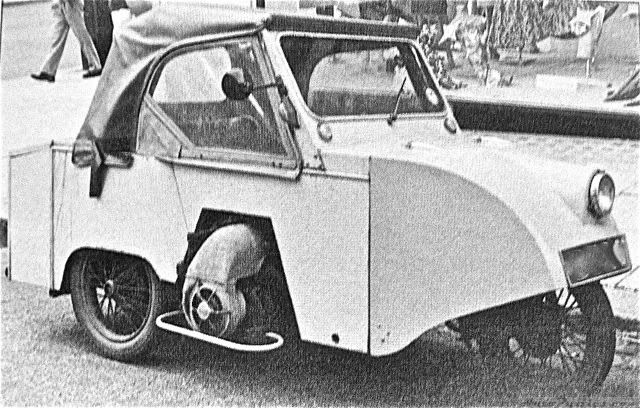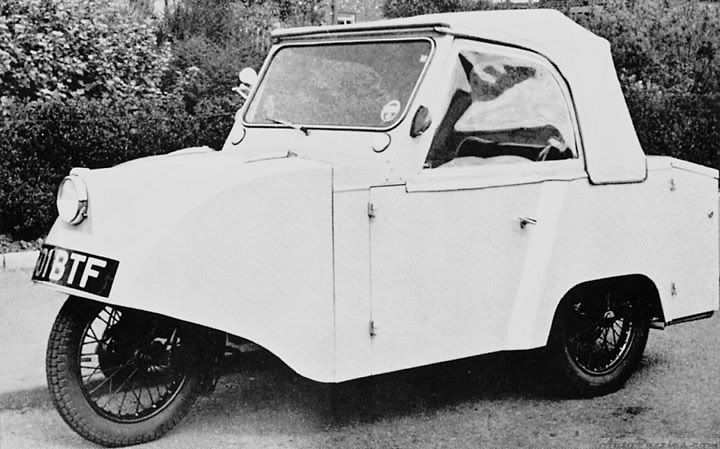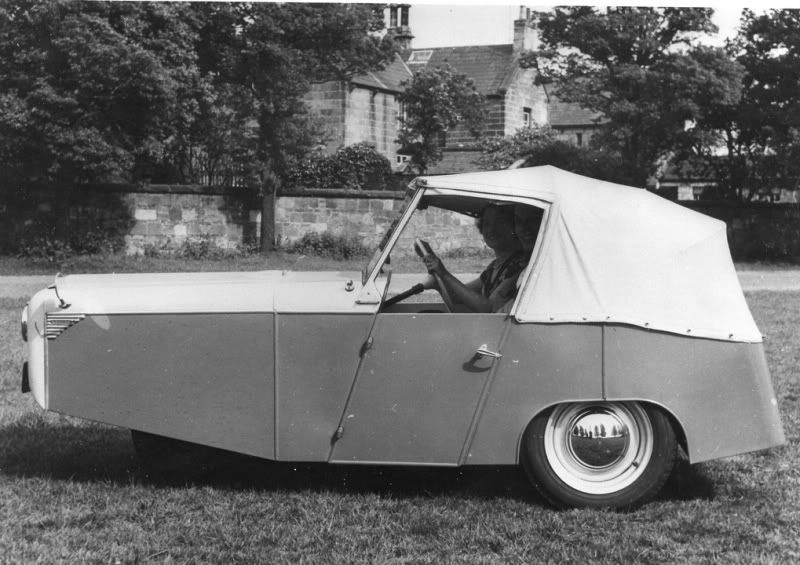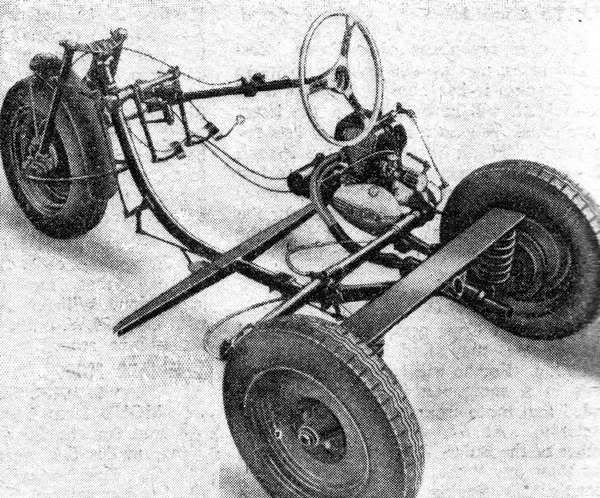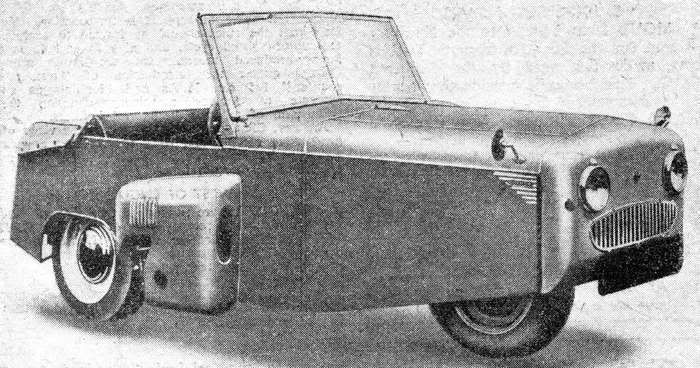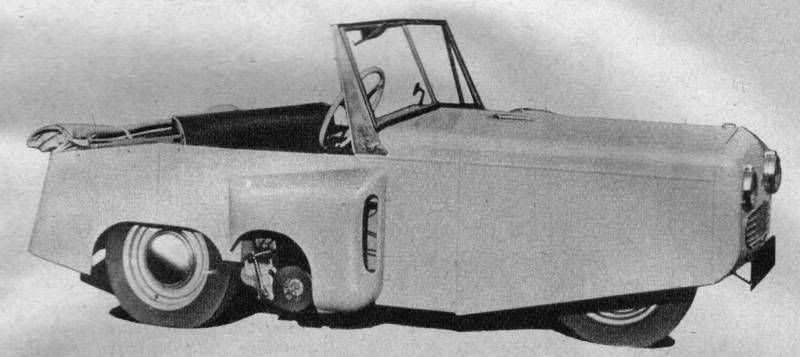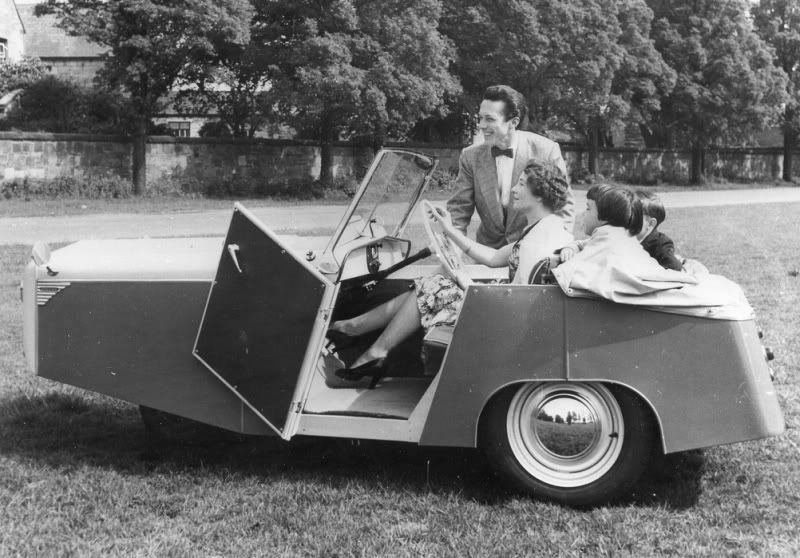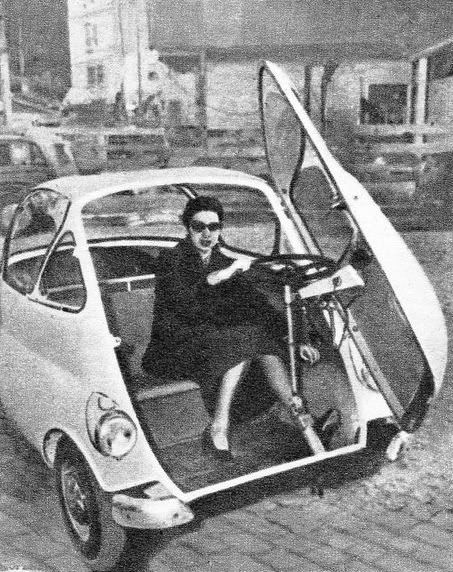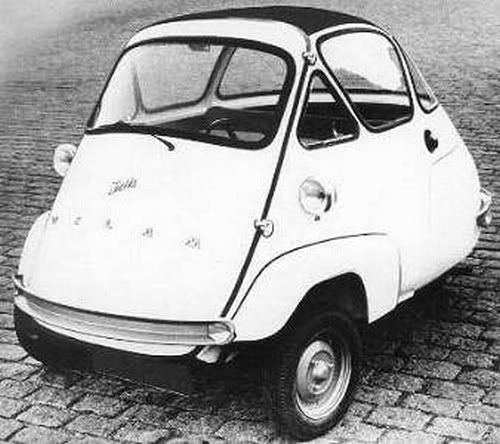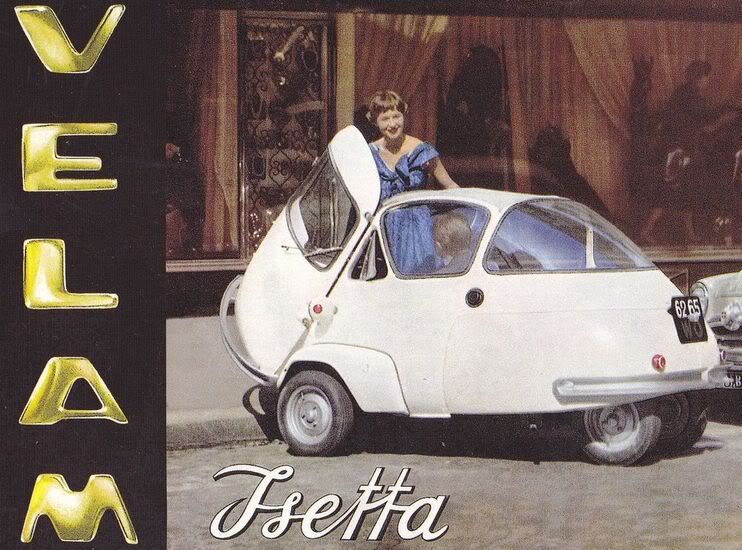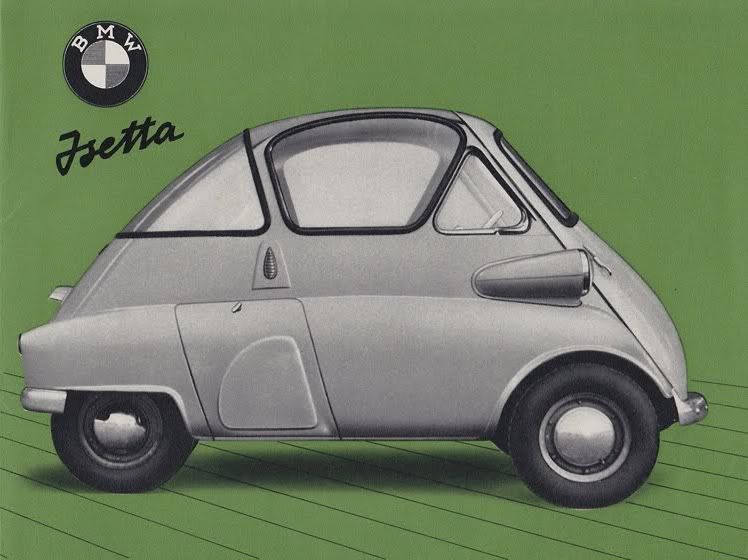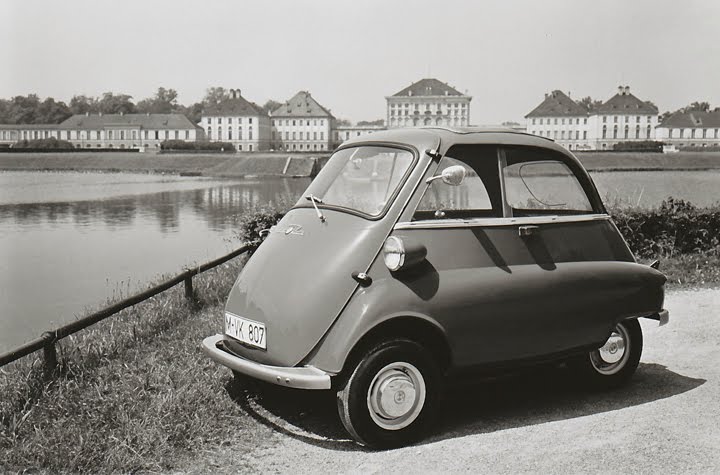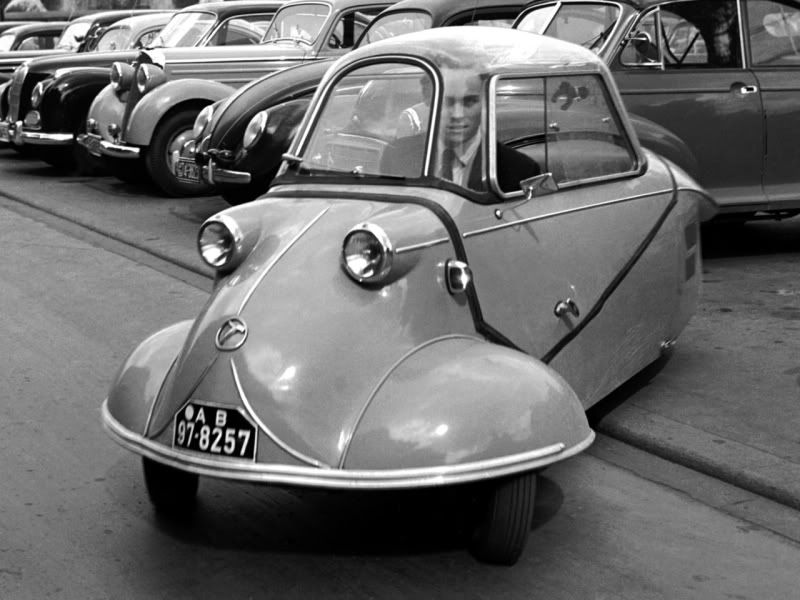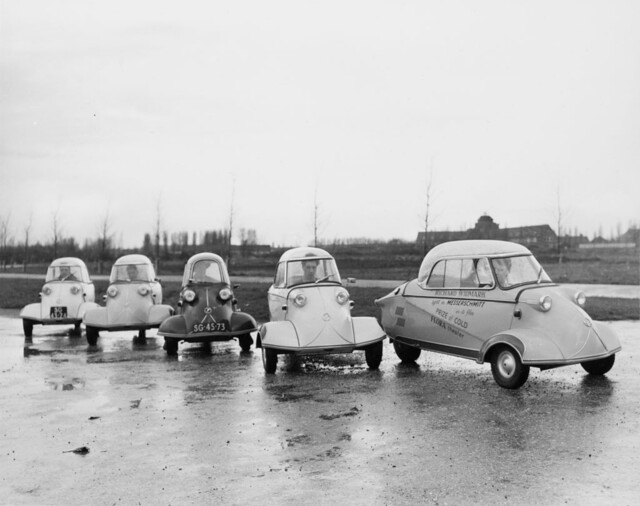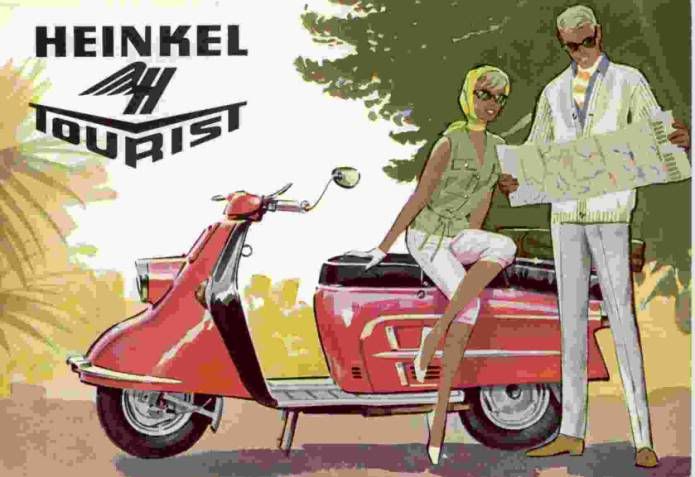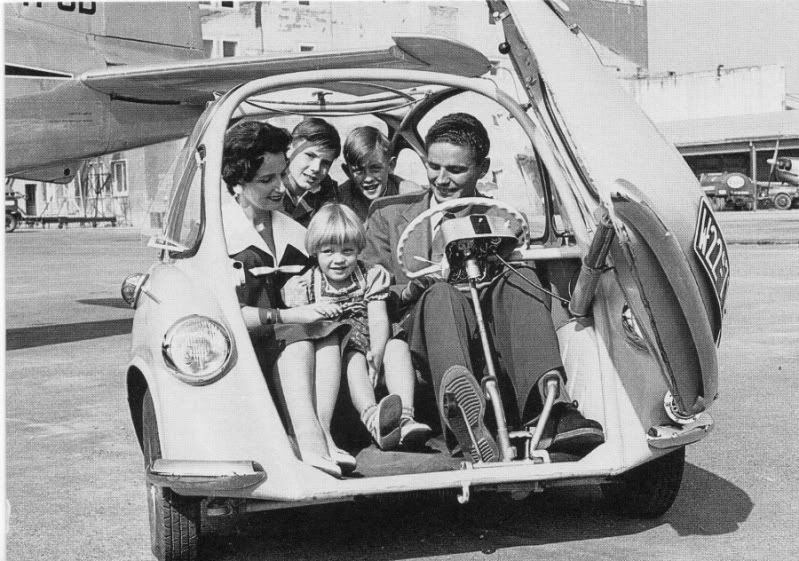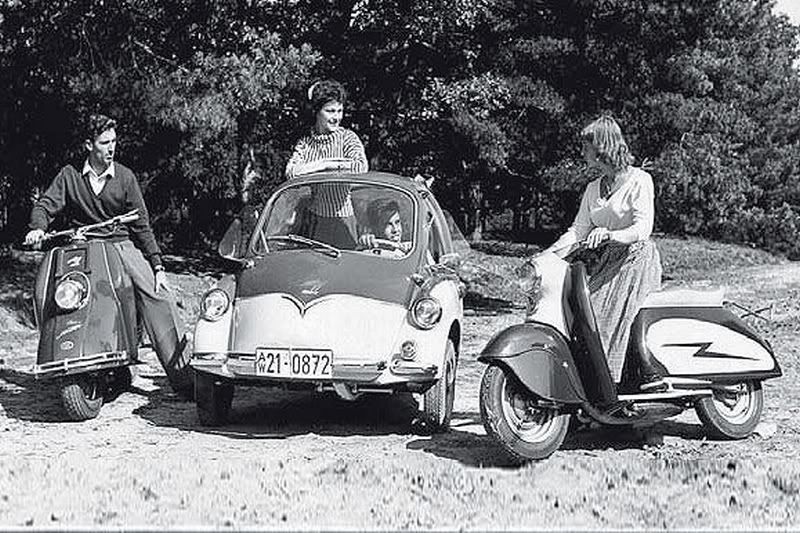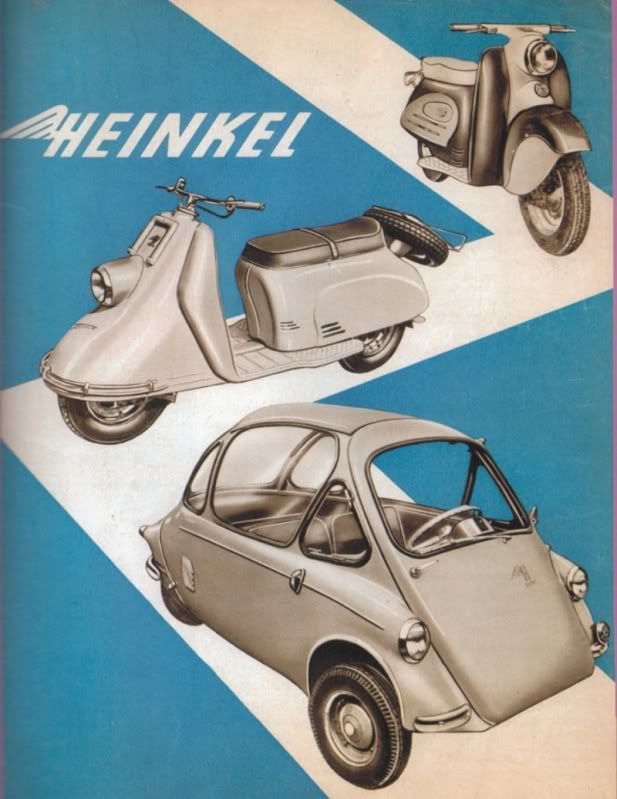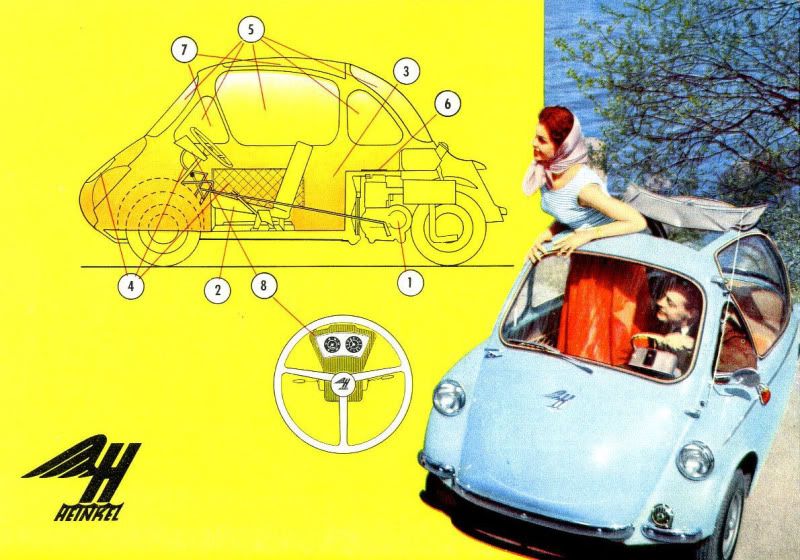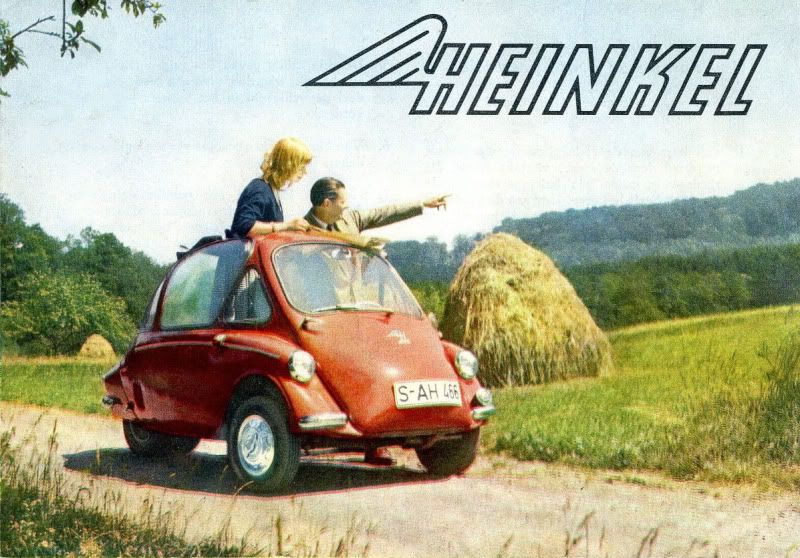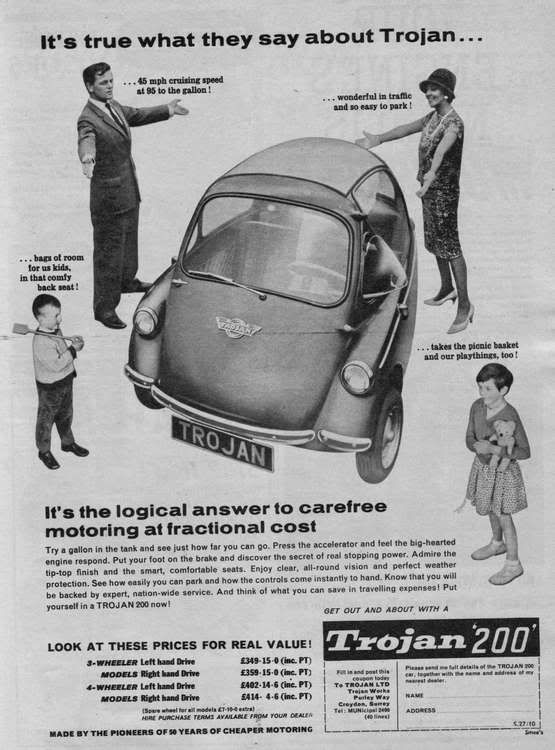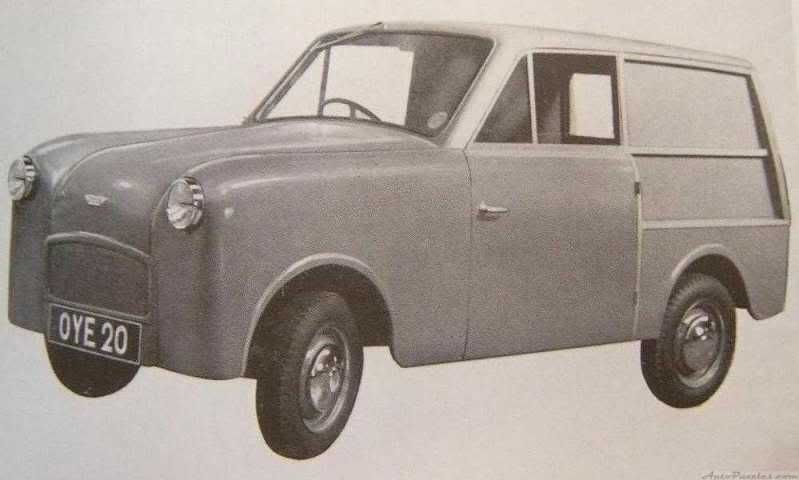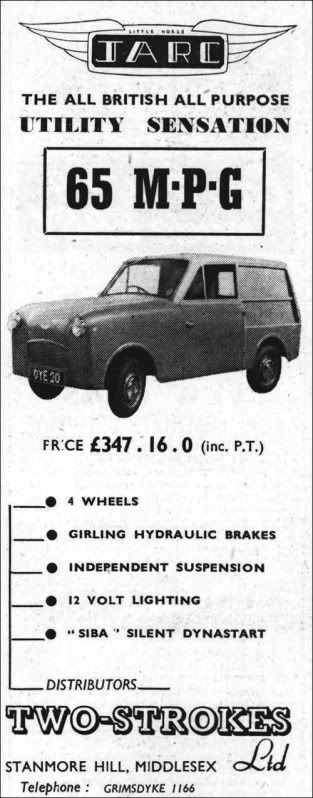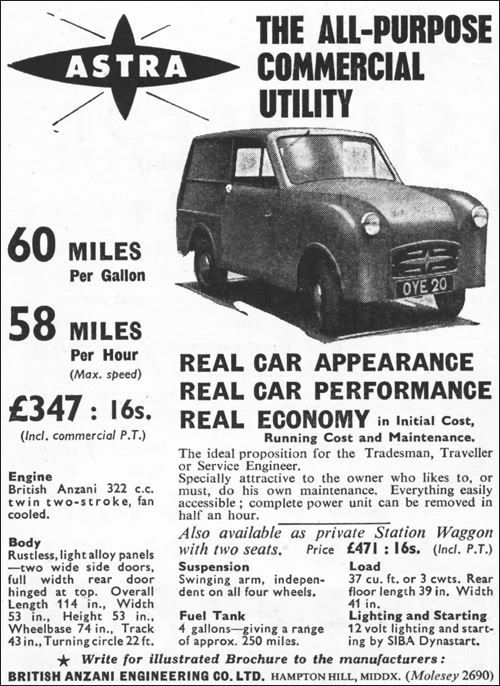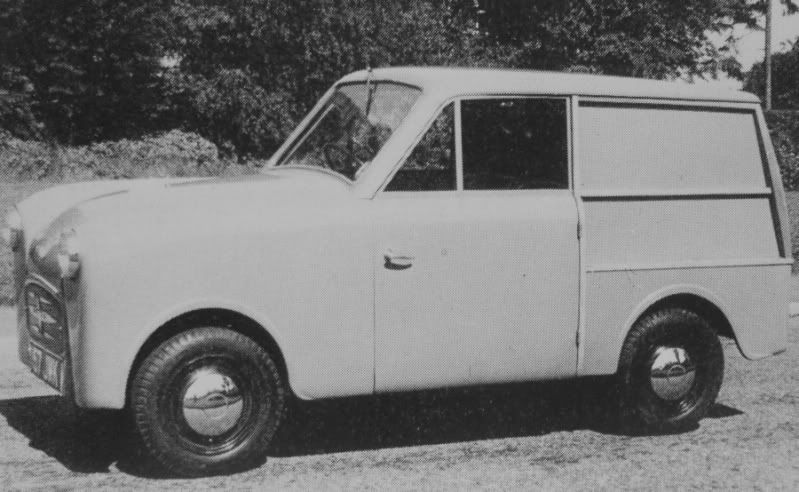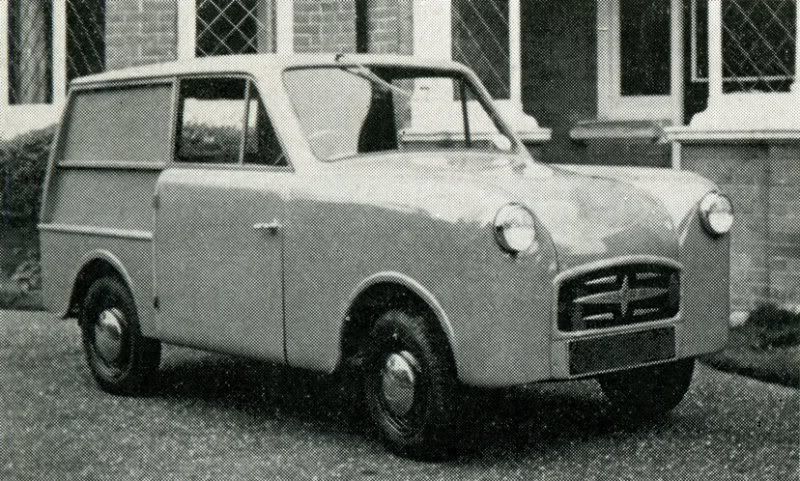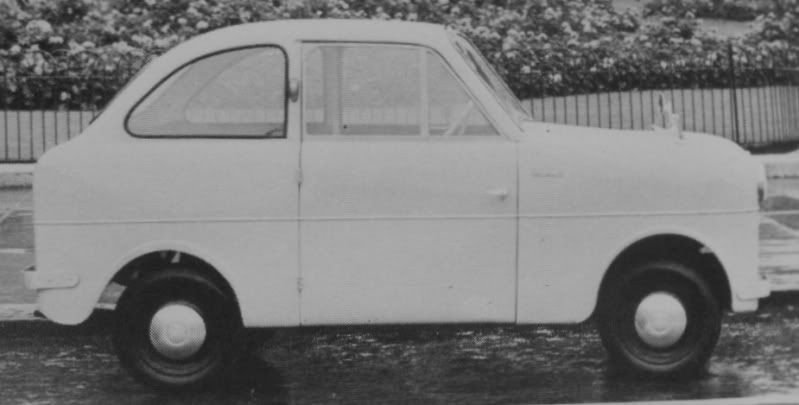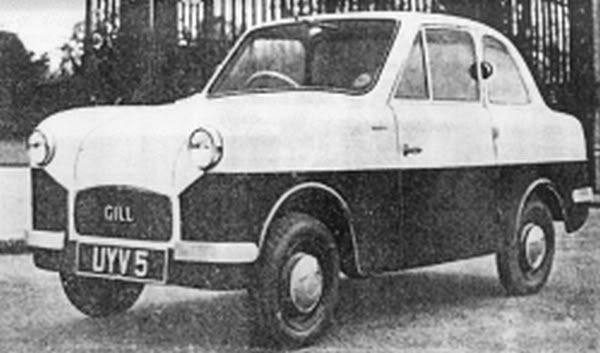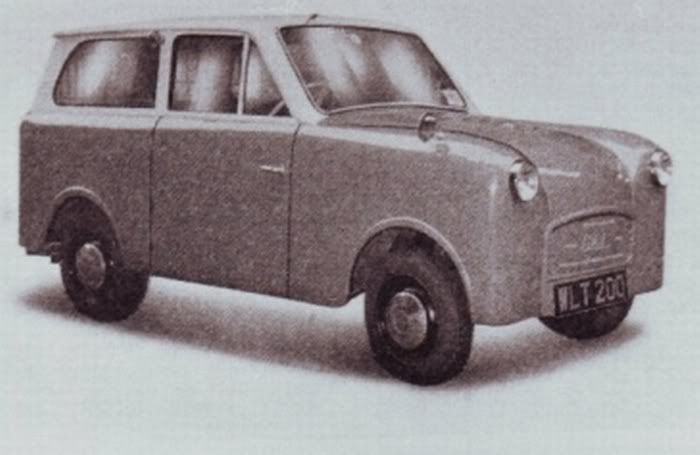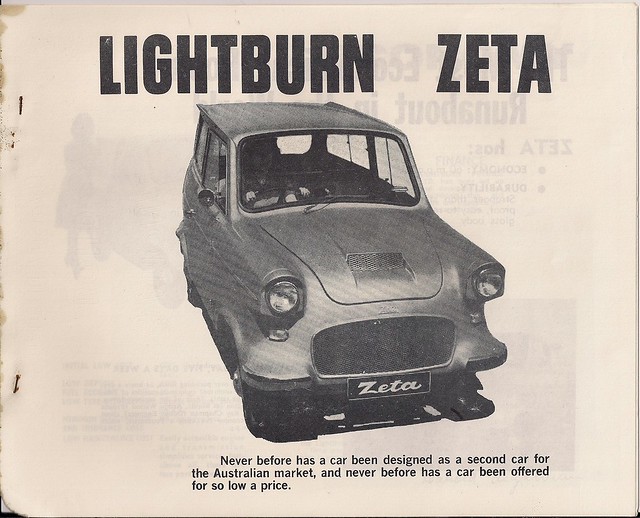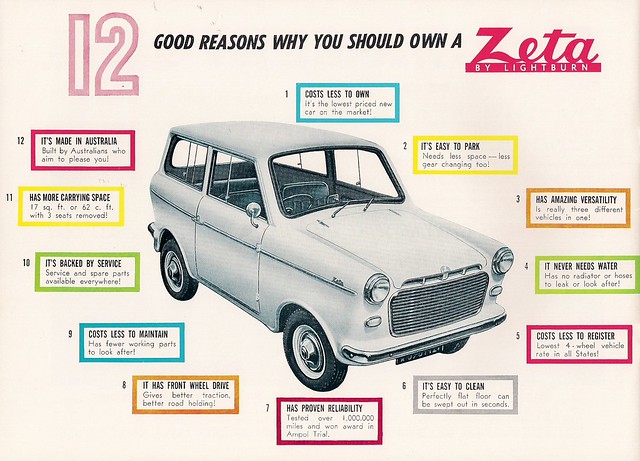
On the face of it, 1956 was a great year for the minicar. Judging by this poster, the choices offered in the economy car sector were huge and varied. Unfortunately, the reality is less kind. Out of the 28 vehicles shown, at least 5 never made it beyond the prototype stage and one, as far as I can tell, never existed at all. Only a couple of the marques featured made it into the next decade, and most were already in their death throws in 1956, or gone within the next year or two.
It must be said that a few of the cars were a success in their respective countries and, in a couple of instances, for export too. It also must be said that some of the biggest successes were not due to any real superlative qualities (even relatively, within the field of small economy cars), but rather a lack of competition from other makes. That some of these tiny devices sold in the thousands and others in the tens seems more down to luck and circumstance than any inherent quality (or lack thereof) in the cars themselves.
One thing the poster does show is the huge variation of solutions offered to the same essential problem; That of transporting a couple of occupants for the lowest price possible, disregarding most notions of comfort or performance in exchange for absolute economy. With a couple of noble exceptions, none of these cars were conceived as anything other than a temporary solution to a temporary problem, and as such have none of the everyman qualities that make a true 'people's car' great, these were cheap, disposable objects, not the realisation of utopian dreams to mobilise a nation.
The first group of cars I'll be looking at are, despite being built by three different companies in three different nations, all very closely related, all being the brainchildren of one Egon Brütsch. Brütsch was something of a rich playboy, who had ample wealth to spend designing a series of cars that conformed to his own personal vision of what the battered masses of post-war Europe should be using as transport. Brütsch was one of the pioneers of glassfibre technology in Europe, and favoured a method of construction where the bodyshell consisted of two halves, top and bottom, which were joined by a seam. As his designs didn't include doors, roof or bootlid the top piece was one solid section. Most of his cars had externally mounted engines and didn't need a bonnet either.... Most of the cars he designed adhered to this same basic design.
Although Brütsch was an eager and prolific designer, it seems that he never really had any major plans to manufacture cars himself. Instead, his plan was to design and prototype vehicles and then sell licenses to other companies throughout Europe to build cars to those designs. Unfortunately, Brütsch was easily bored and moved quickly from one project to the next, the result was that none of his designs were tested to any real degree and the many companies who purchased licences ended up spending a fortune making the cars safe and production ready.
Brütsch's first major design was called the Spatz (sparrow), a medium-sized three wheeler (in the 'Morgan' configuration rather than the 'Reliant' one) which due to it's width could seat three people in relative comfort. As mentioned above, no provision was made for weather protection, entry was via cut-outs rather than doors and the join between the two body halves was covered by a rubber 'bumper' running the entire circumference of the car, a feature which became something of a trademark of Brütsch designs.
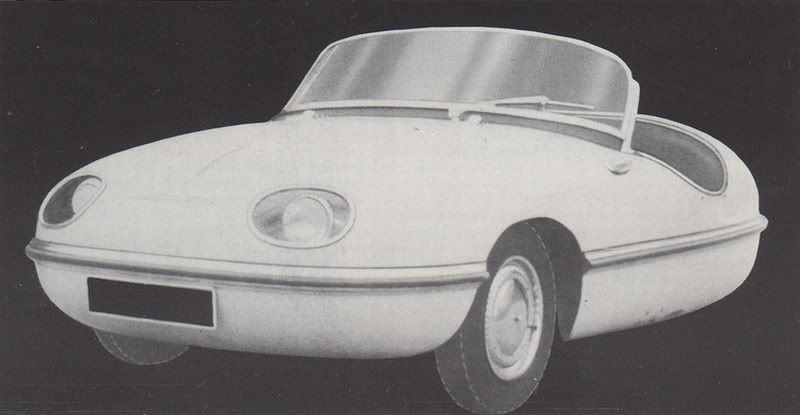
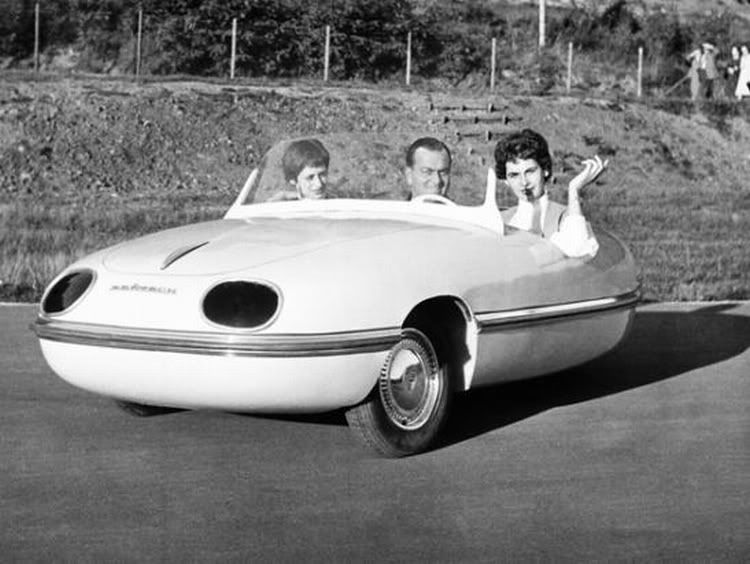
One of the first people to purchase a license for the Spatz was Harald Friedrich, managing director of the snappily named Alzmetall P. Meier & Friedrich GmbH. I can't find any mention of them beyond their involvement with Brütsch so I have no idea what they manufactured, but to manufacture the car Friedrich partnered up with the Victoria Motorcycle company. Victoria was a German institution, having been founded in 1886 as a bicycle manufacturer and thriving as a motorcycle builder from the 1920s. Their factory had been severely damaged during wartime bombing, but production of new motorcycles had begun again in 1948.
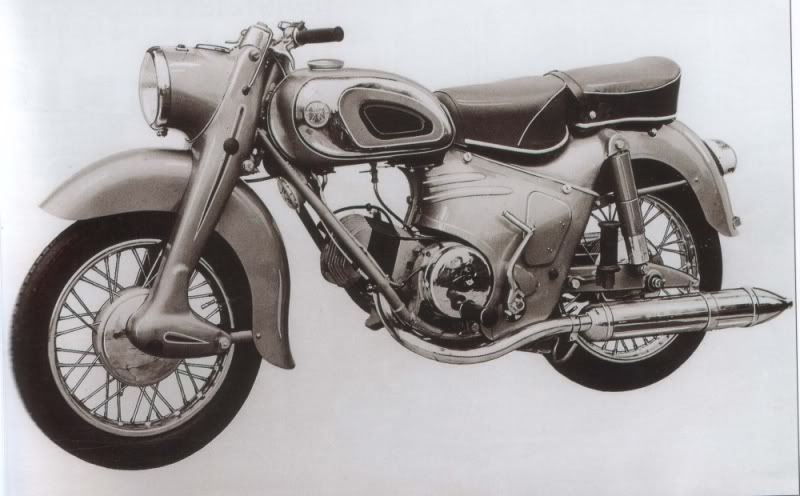
By 1955, they were making things like the 'Swing', above, and doing pretty well in the crowded German Motorcycle market. It was logical that they would expand into small car production, like so many other motorcycle firms were doing at the beginning of the 1950s, and the prospect of a ready-made design from Brütsch with financial backing from Friedrich must've seemed very appealing at the time. Unfortunately, the firm soon realised that the Spatz as designed by Brütsch was completely unsuitable for production. The company hired the retired engineer Hans Ledwinka, of Tatra fame, to design a brand new chassis, steering and suspension set-up for the car (Possibly an over the top move, as I'm sure any competent engineer could've done a similarly decent job and cost considerably less. The reasons for choosing the infamous Czech remain obscure), which included the drastic step of turning the 3-wheeled Spatz into a conventional four wheeler. The engine was a rear mounted Victoria 200 or 250cc 'bike engine, which in itself was a highly modified Ilo design.
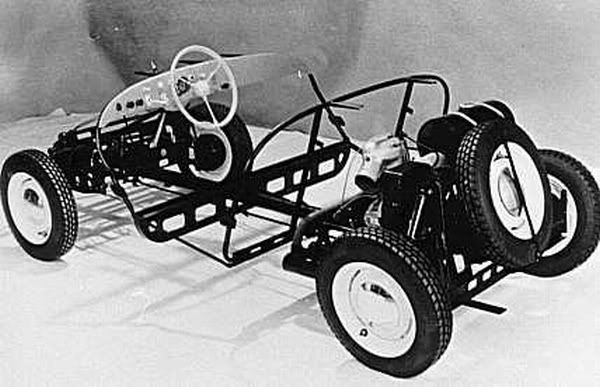
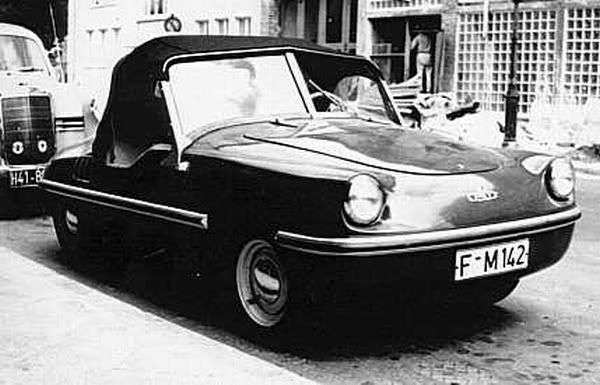
The bodywork also received a comprehensive restyle with headlights uncovered and moved outboard and more pratical door cut-outs and a higher 'screen, but retaining the rubber ring around its midriff.
Eventually the car was deemed ready for production and Victoria started selling the car as the Spatz. After investing a considerable sum of money in making the car a salable product, they rightly believed the car to be of their own design and refused to pay Brütsch his license fees. Unwisely he took the firm to court, and not only did the judge rule in Victoria's favour, he also declared Brütsch's original design to be 'dangerous'!
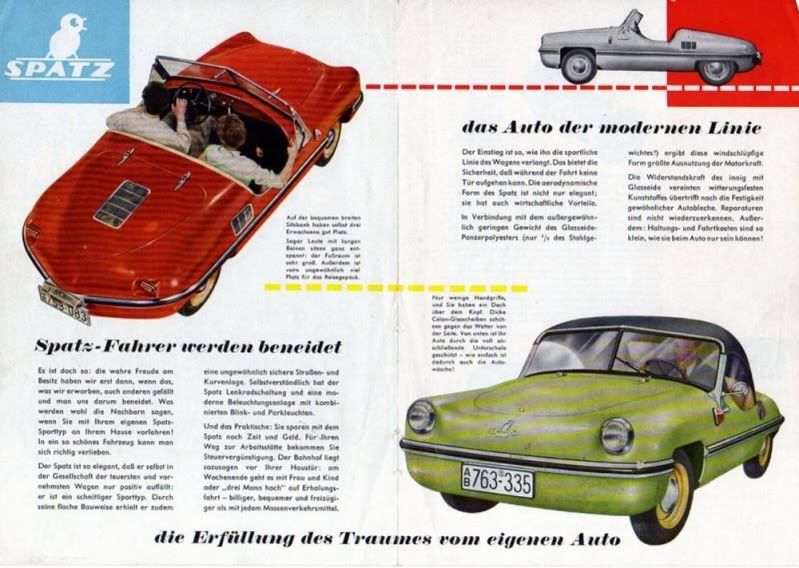
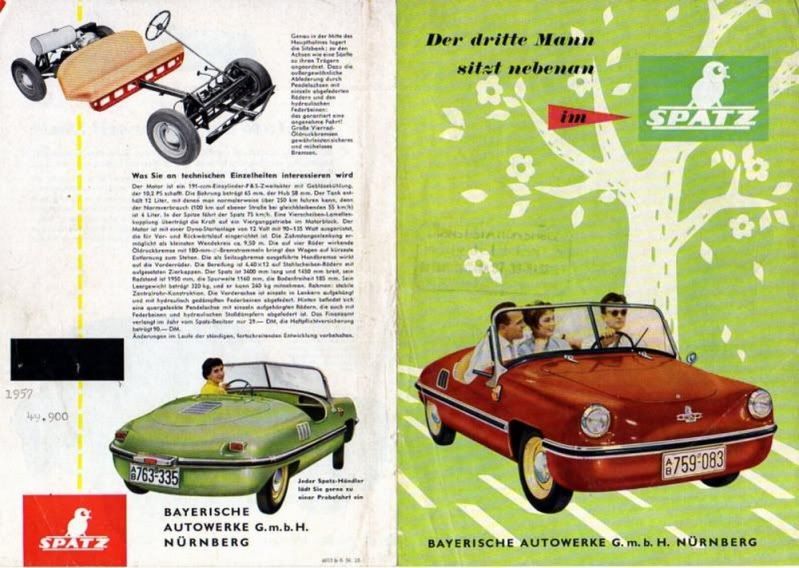
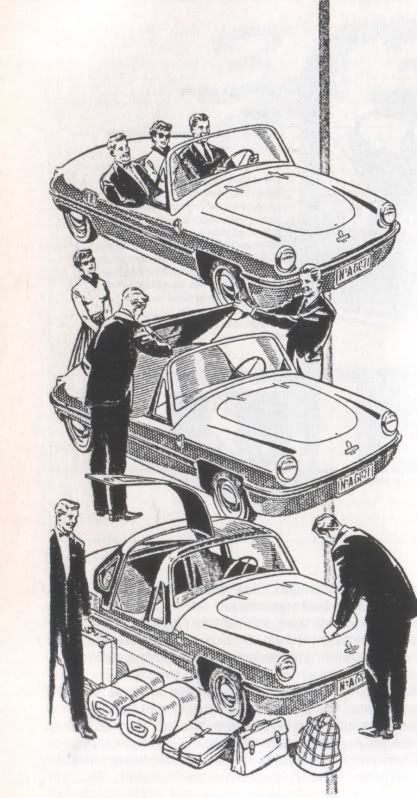
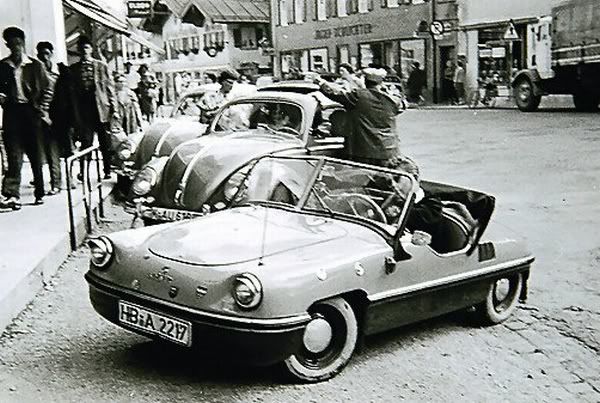
Probably due to the complete redesign, the Spatz was probably the most successful Brütsch-related car, with approx. 1500 sold up to 1958. After that, the design was taken over by a company called Burgfalke, and further improved with proper doors and better weather equipment. They planned to sell the car in North America and, apparently, met with moderate success in doing so, although the fact I can't find a single image of a supposed Burgfalke Spatz beyond a brochure shot paints a different picture.
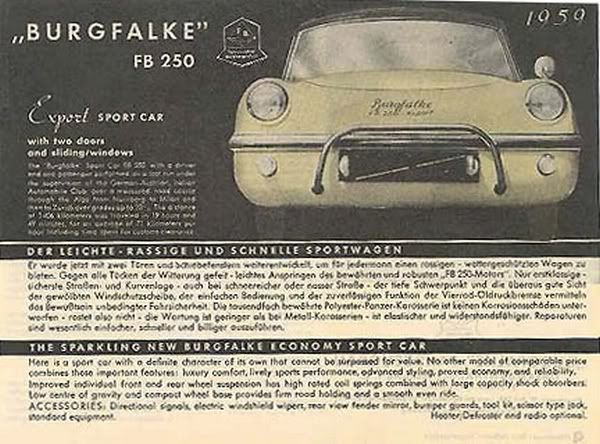
One of the less successful Spatz licenses, and the second Brütsch design featured in the Panorama 1956 poster, was purchased by A. Grünhut & Co.of Wollerau, Switzerland, who bought the license after Brütsch exhibited the Spatz at the 1955 Geneva motor show. At the time there was no Swiss motor industry to speak of, and despite not feeling the effects of WWII as much as the rest of Europe, there was thought to be a need for a small Swiss-built economy car, and obviously Brütsch's promise of a ready-made car was appealing. The firm planned to market the car as a 'Belcar'. Like the German Victoria Spatz, the bodywork received some modifications from the original, with more practical headlights windscreen. The same Victoria 200cc engine was chosen for the Swiss car as it had a precedent for reliability in it's traditional two-wheeled home. Again, the shoddy nature of the original design created major problems and the discovery of serious flaws with the front suspension and steering design delayed production, with cash for the project drying up in 1956, effectively killing the car before it was even born. It's unlikely any of the cars survive today.
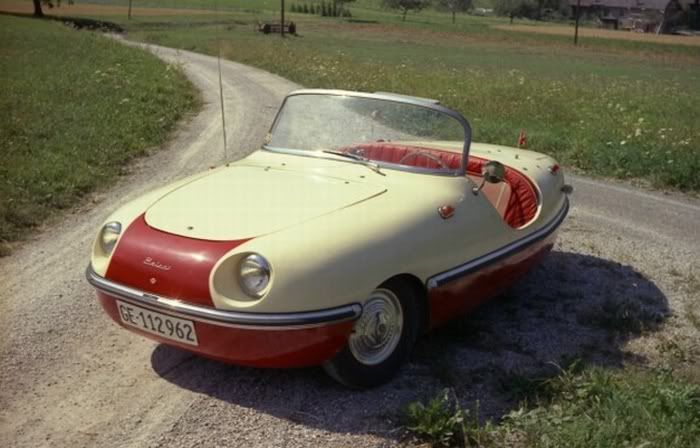
The Third Brütsch car featured here is the French Avolette, which is based not on the Spatz but another Brütsch design, the Zwerg (Dwarf). In size terms, this was somewhere in the middle of the Brütsch range, smaller than the Spatz but bigger than the tiny Mopetta. The traditional Brütsch styling traits can clearly be seen, with the distinctive rubber bumper, cut down 'screen and covered headlights it was clearly a close relative of the Spatz. The Zwerg shared that cars general layout too, with a rear mounted engine driving the single rear wheel.
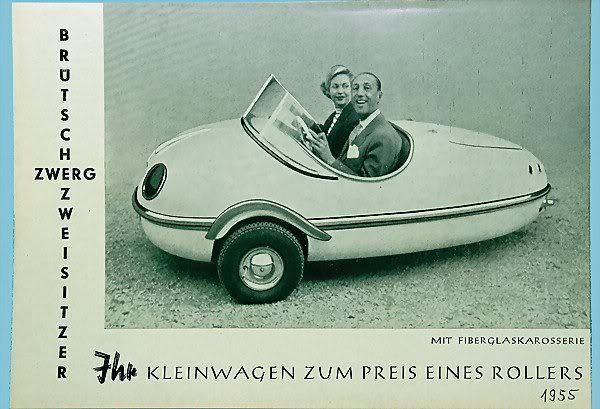
The Avolette was built by a small Paris-based air company, Société Air Tourist, who purchased the license to build the Zwerg in 1955. Like the Spatz, the Zwerg also appears to have been a fundamentally flawed design from the beginning, and SAT were forced to completely redesign the chassis and steering for the Avolette. The body was also slightly changed, gaining a single inboard headlamp and more prominent wheelarches. Unlike Victoria however, SAT were happy to continue to pay the license fees to Brütsch despite having invested considerable time and money bringing the car to production standards.
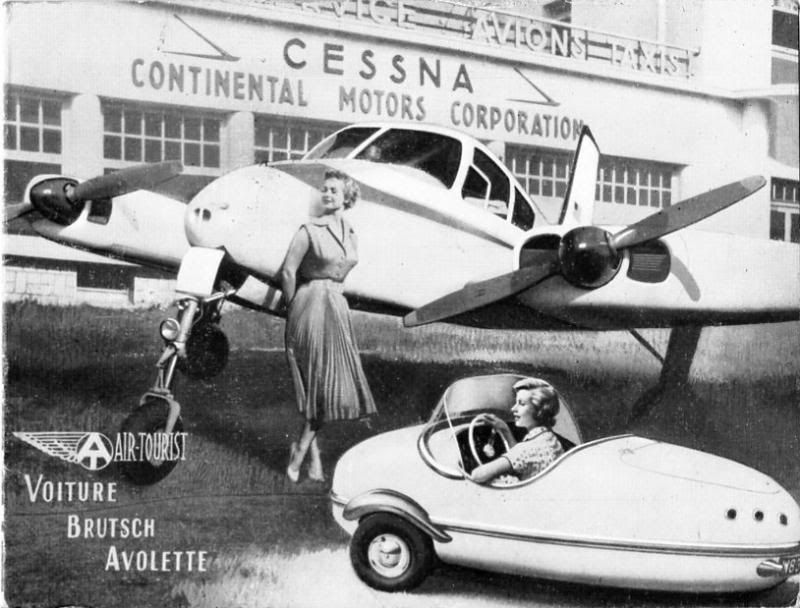
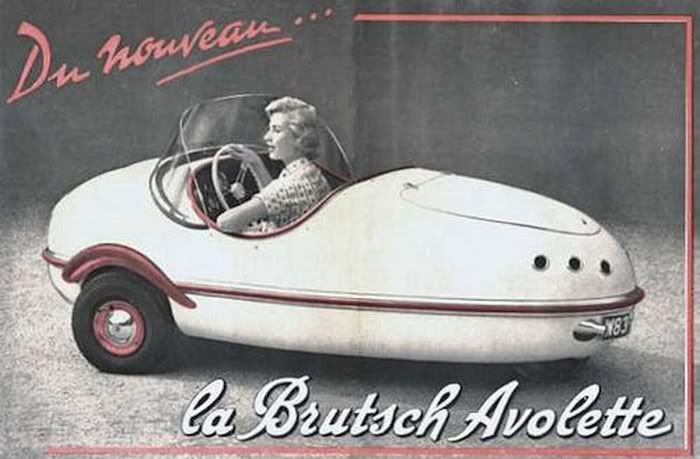
(early Avolette literature showing the unmodified Zwerg)
SAT had to push ahead with selling the newly productionised Avolette, and spent some time making it more attractive to the French public, who were already spoiled for choice when it came to bottom-rung microcars, by designing a unique hardtop for the car as an option to make it more practical winter transport. The main appeal of the car in France was its ability to be driven without a license, back in the days when the rules for sans permis cars was anything under 125cc (!). The Avolette could be had with a large variety of engines in fact, from the 125 to a 200cc Fichel & Sachs motor that also powered the Messerschmitt.
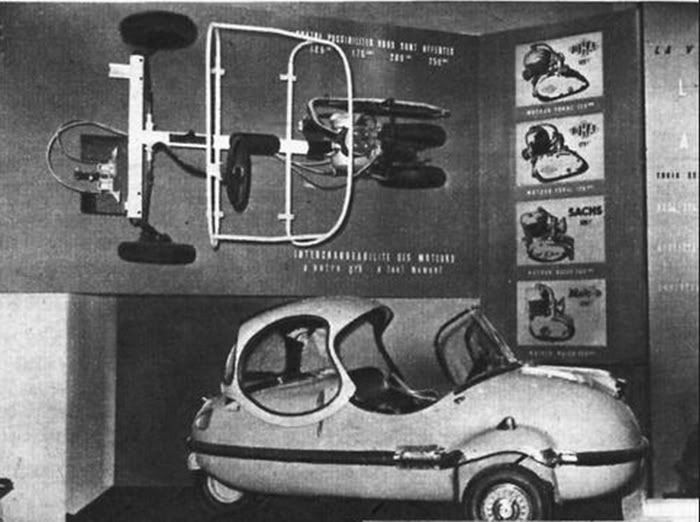
A 'fully loaded' Avolette complete with hardtop. Chassis and engine options are displayed on the wall
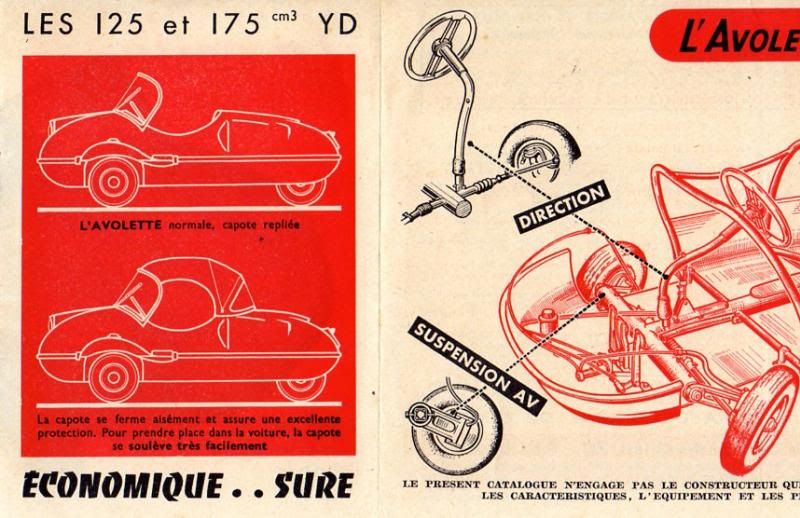
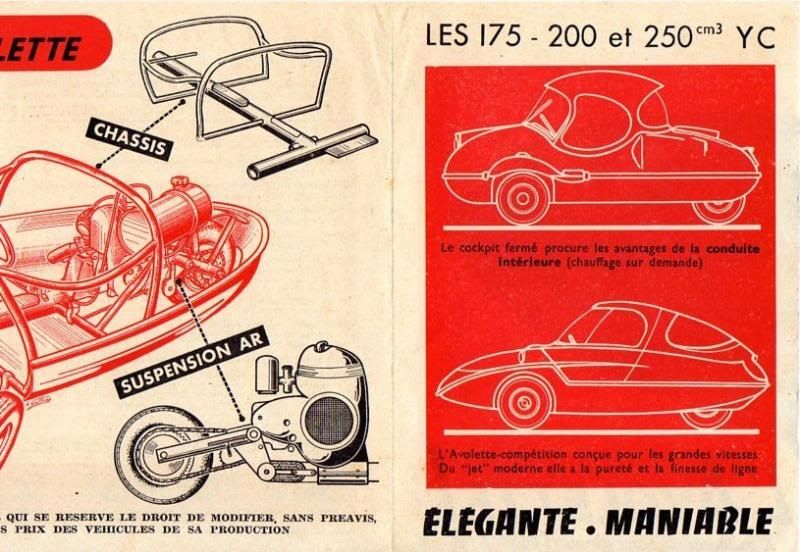
Avolette brochure showing the chassis design and the different variants available. The fourth closed coupe style was never built
At the same time, SAL completely redesigned the exterior of the car and showed a prototype of the new 'Record De Luxe' in 1956, but it is doubtful whether it was ever built. Whilst this was going on, and seemingly unperturbed by having to basically redesign the Avolette from scratch, SAL also took on another license-built Brütsch car, the Rollera, which they equipped with a 100cc Comprema engine and a bespoke folding soft top.
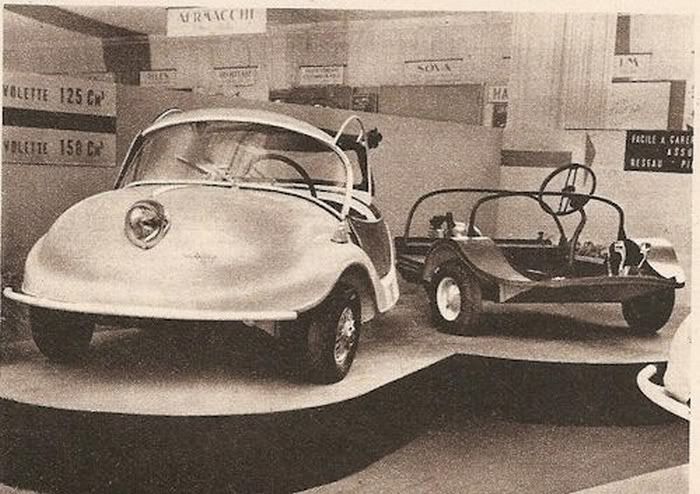

Despite all these efforts, it seems SAL only shifted a small handful of cars in total, and production ended completely in late '57 or early '58. Several of the cars have survived however and, like all Brütsch cars, are now very collectable.

